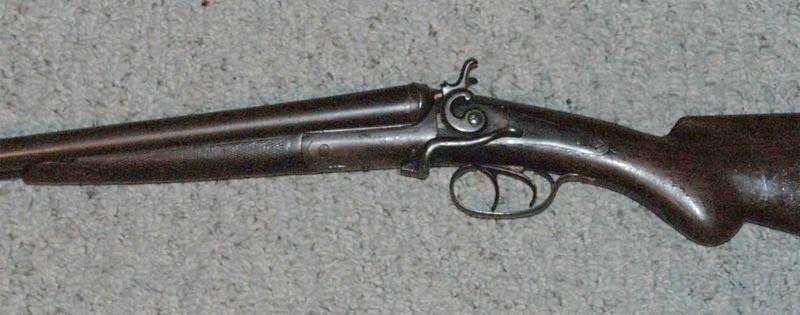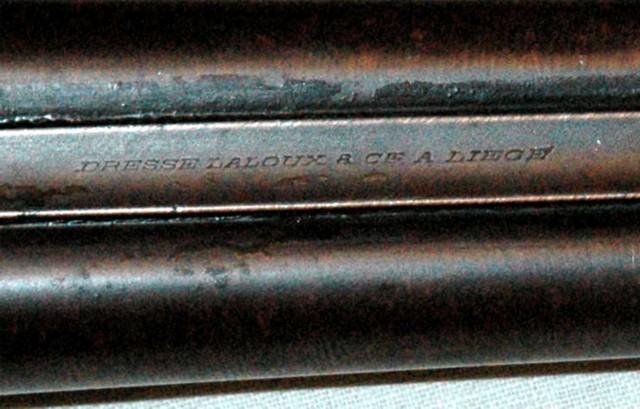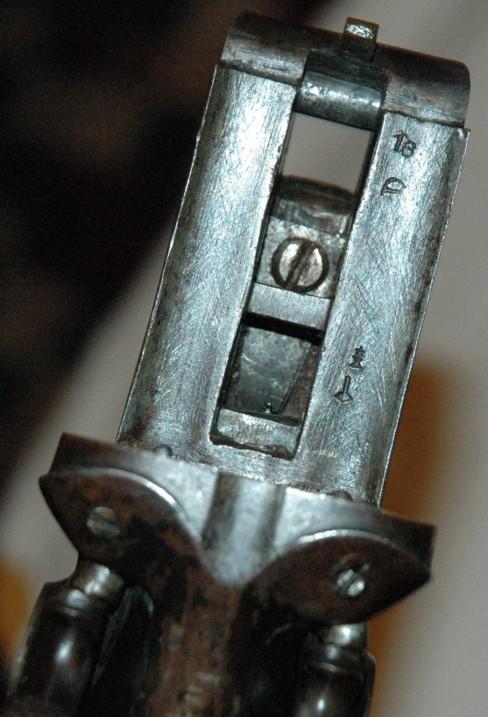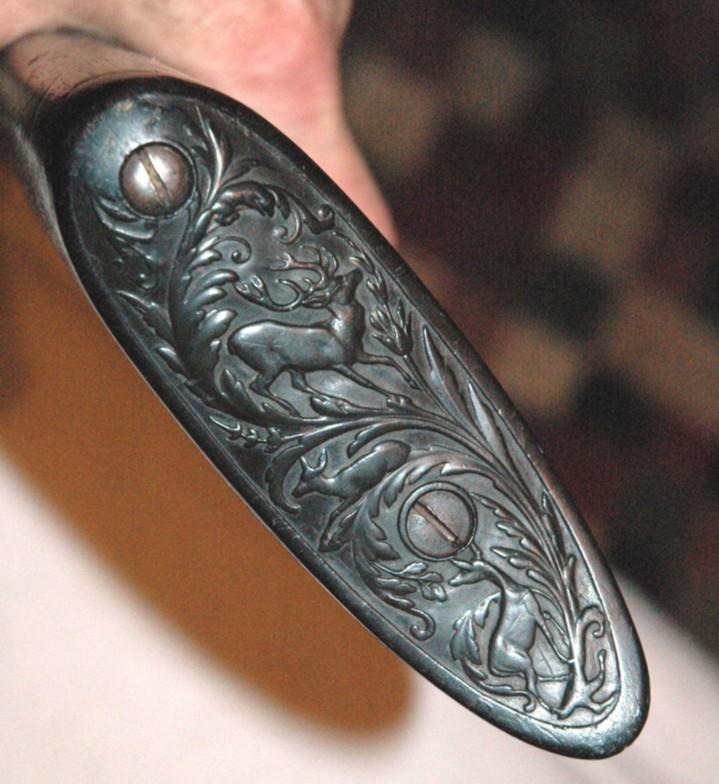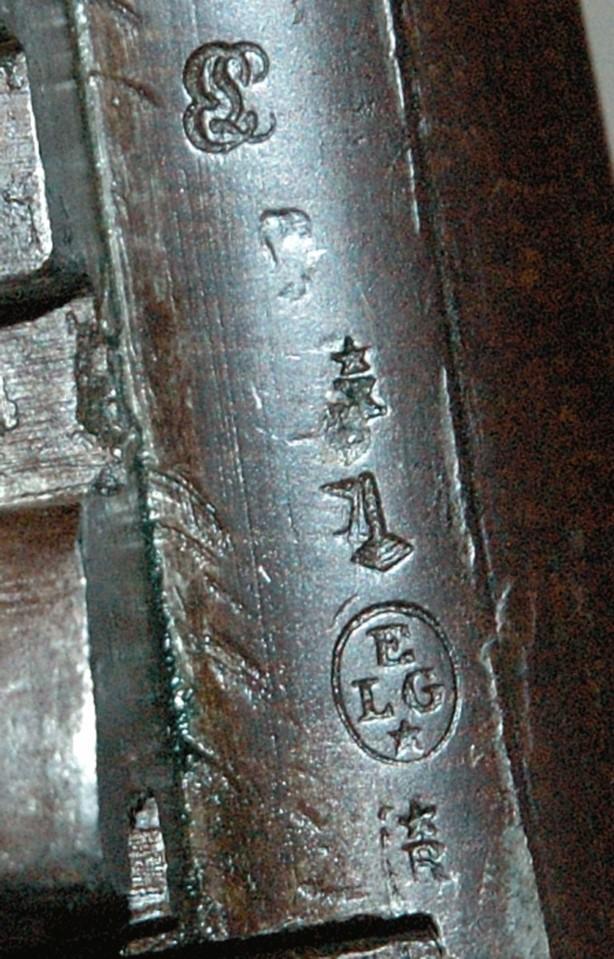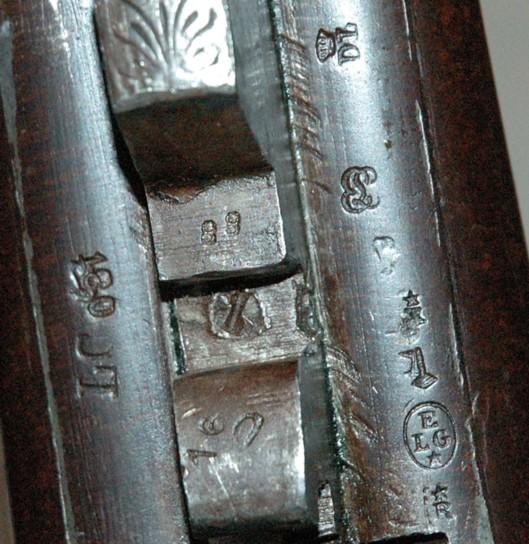Some of the most beautiful work of this craftsman, and many others, are in this book “Liège Gunmakers through their Work. 1800 - 1950”.
For more detail see: LIEGE GUNMAKERS
Dresse Laloux & Cie
This is a flintlock rifle that appears relatively complete, with its ramrod still present, and reasonably well preserved, judging by its slightly pitted metal parts.
Markings:
ELG over an oval star, proof house mark from September 8, 1846, to July 11, 1893.
S&D on the buttstock: probably the original manufacturer's mark, see below.
GB above the counterplate, perhaps for Gouvernement Belge (used from 1831 until around 1920)? Subject to change...
Number 70: serial number?
Logo representing a bee containing the initials DL: this marking is the property of the firm Dresse Laloux et Cie, known on the site.
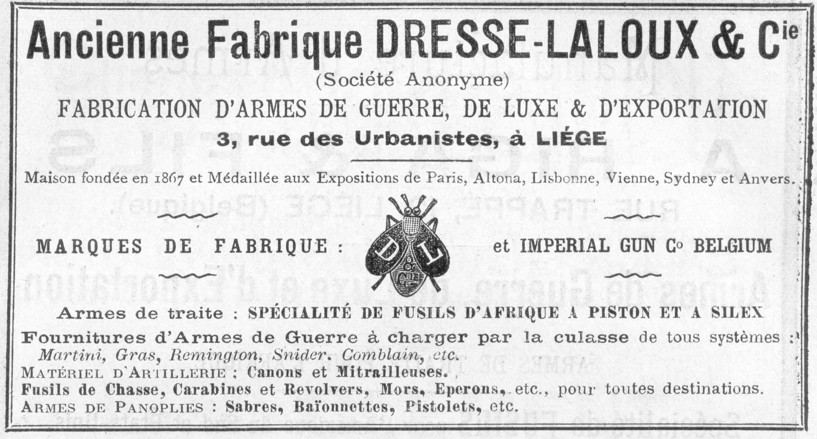
The presence of this Dresse-Laloux logo, registered in 1881, raises questions about a weapon whose design clearly predates it by a century. Research by several members of the team points toward a Prussian origin. Indeed, the initials SD could be the signature of the Splitgerber & Daum firm, which existed under this name from 1722 to 1779. It could therefore be a weapon recovered from a stockpile, retested in Belgium before being resold by Dresse-Laloux in a region of the world that still used flintlock weapons (Africa?). The Georges Laloux company continued to market these completely obsolete weapons even though it was already established on Rue des Urbanistes. Other examples that have experienced the same situation are known, see for example:
However, it is impossible to determine with certainty which weapon served as the basis, even if it evokes the infantry rifle model 1777. Indeed, comparing an original after recycling and the modifications made by Dresse-Laloux is not relevant. In summary, the only indication of any origin remains the S&D which suggests the trail of a rifle from Potsdam in Prussia... During 130 years of leasing, the weapons received the official markings "POTSDAMMAGAZ" and the Prussian eagle as well as the initials of the tenants, although there are three versions due to the change of generation: "S&D" for Splitgerber & Daum or Daumsche Erben (1722 –1779), "DSE" for David Splitgerber seel. Erben (1780-1795) and "GS" for the Schickler brothers (1795-1850), see:
https://fr.wikipedia.org/wiki/Fabrique_royale_prussienne_de_fusils
In conclusion, this is probably a rifle (inspired by the French 1777) originally manufactured in Prussia in Potsdam by Splitgerber & Daum. After recovery, it would have been reconditioned and re-tested in Liège by the Dresse-Laloux firm for resale in a region still using flintlock weapons at the end of the 19th century.
Chris, HPH, PHL, Alain, Alberto
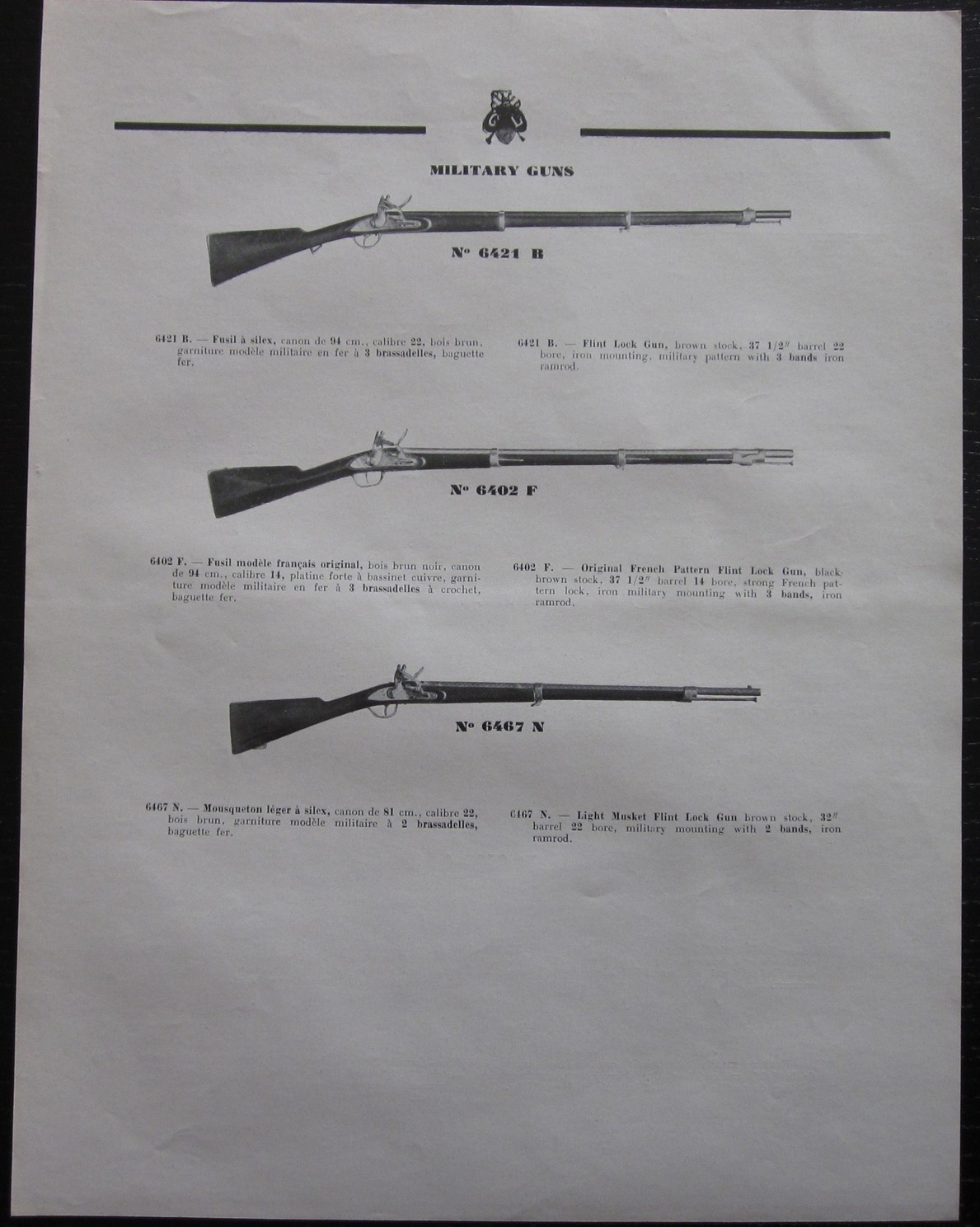
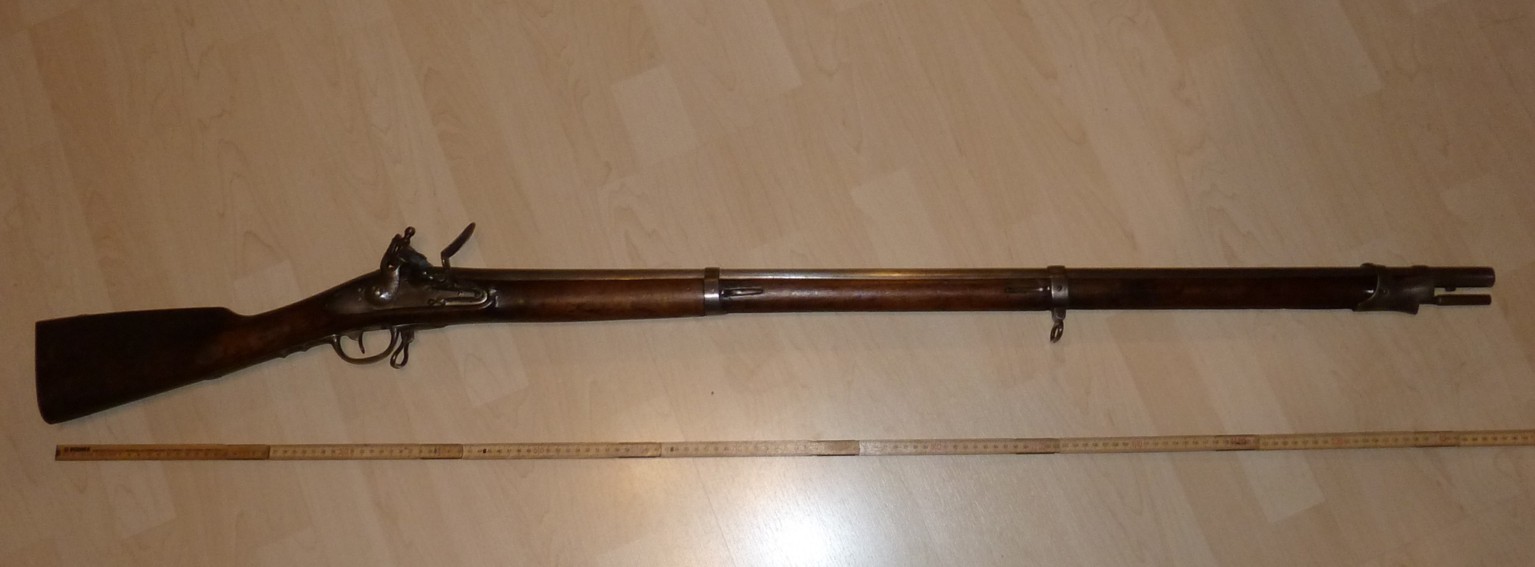
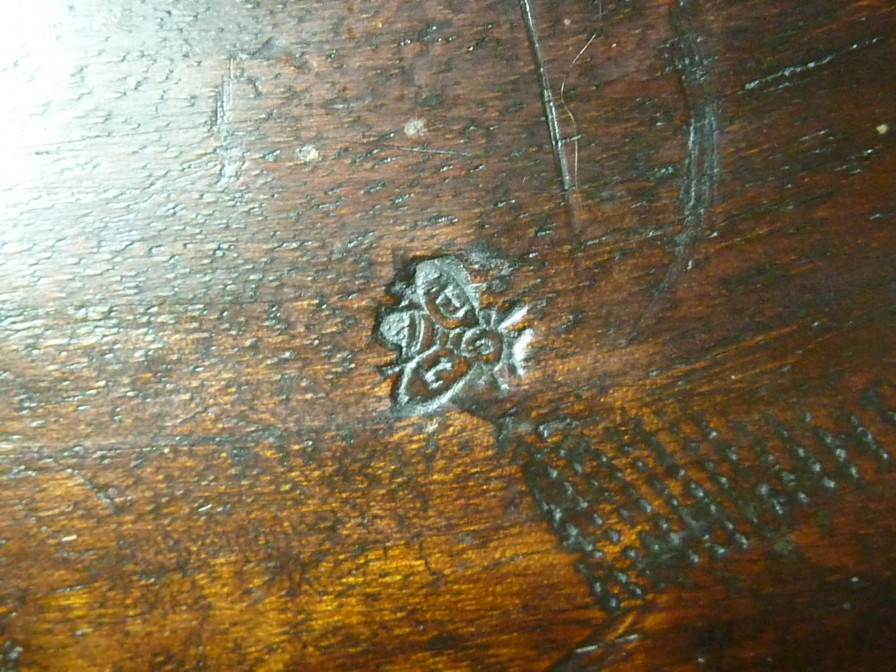
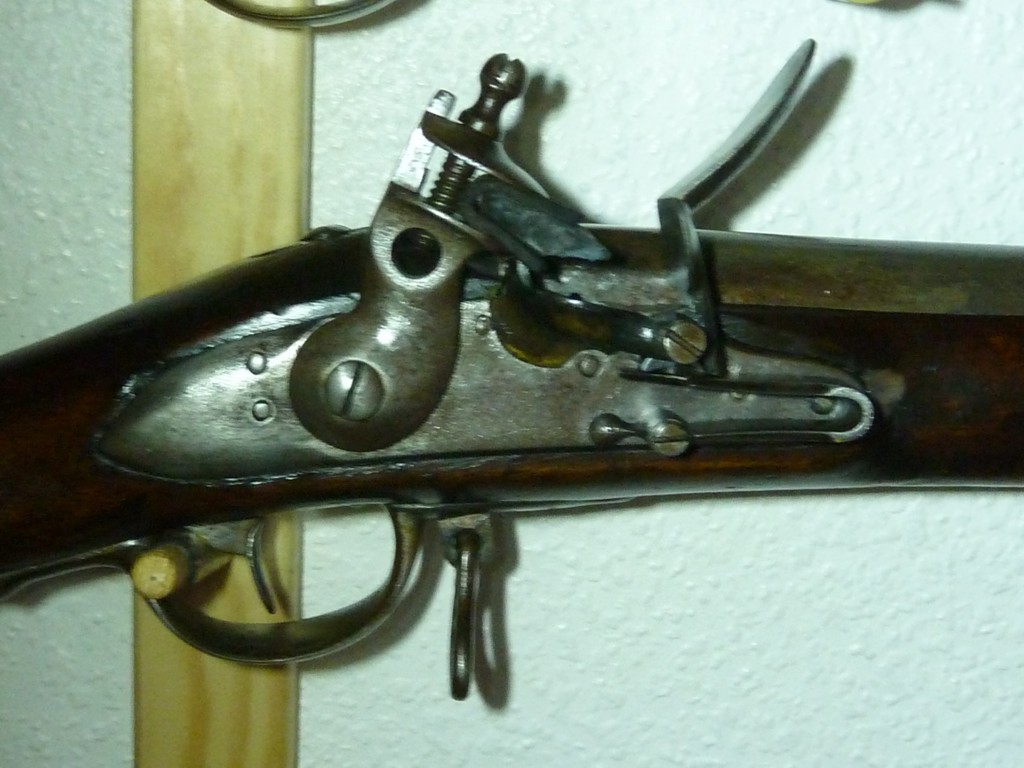
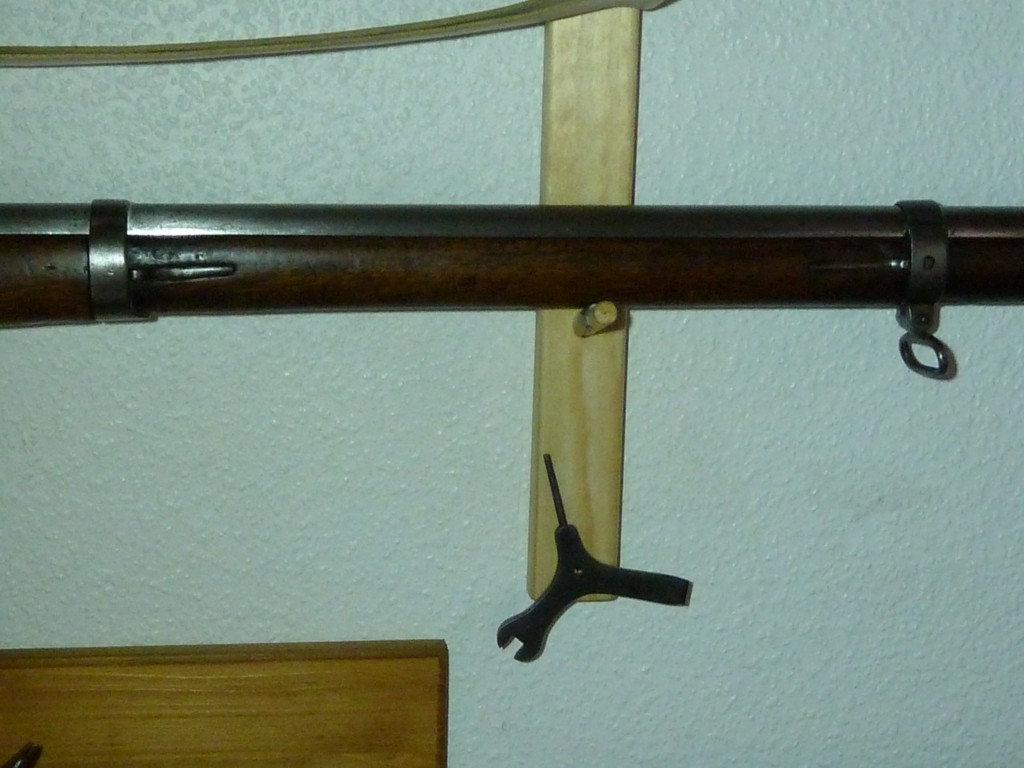
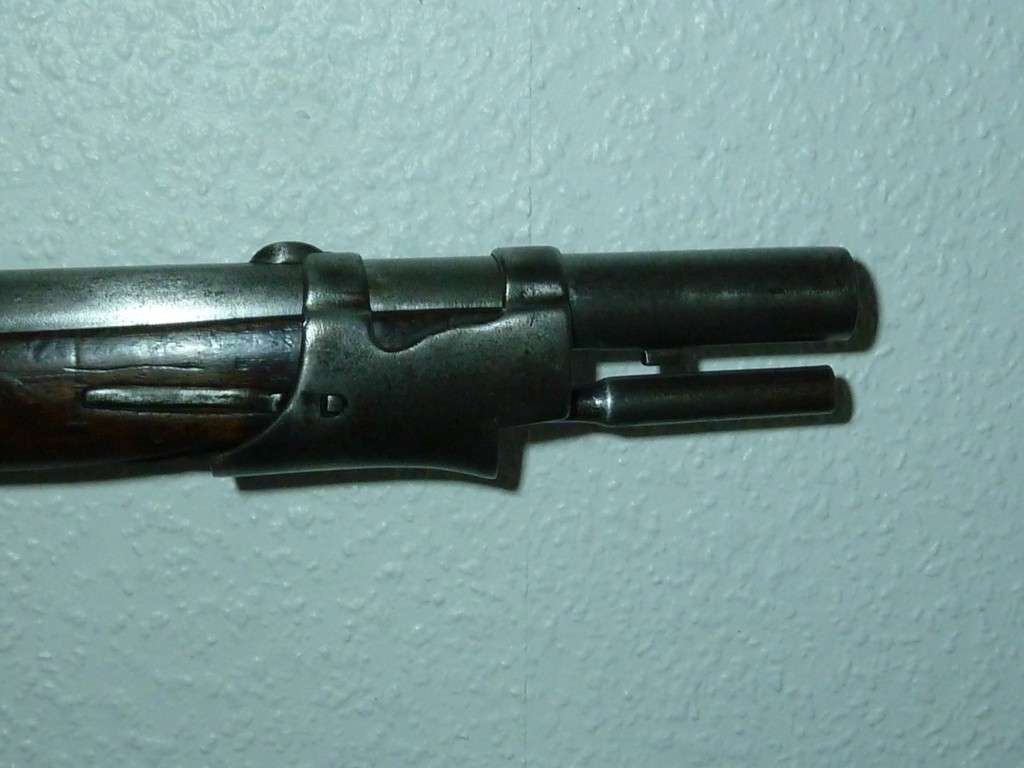
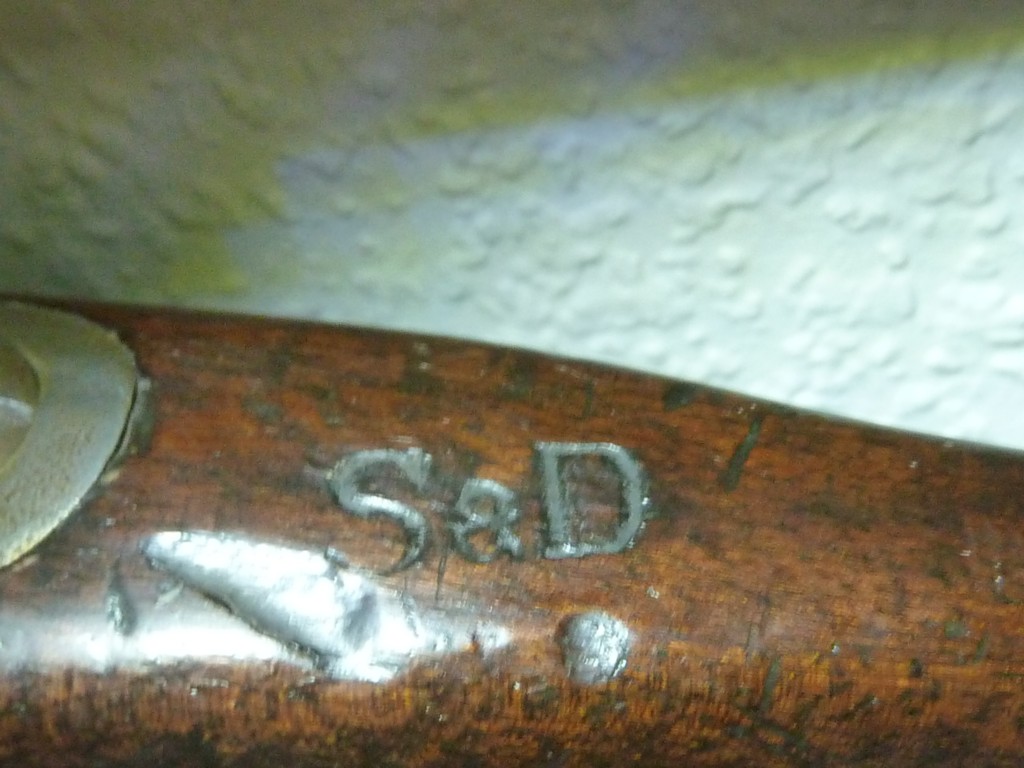
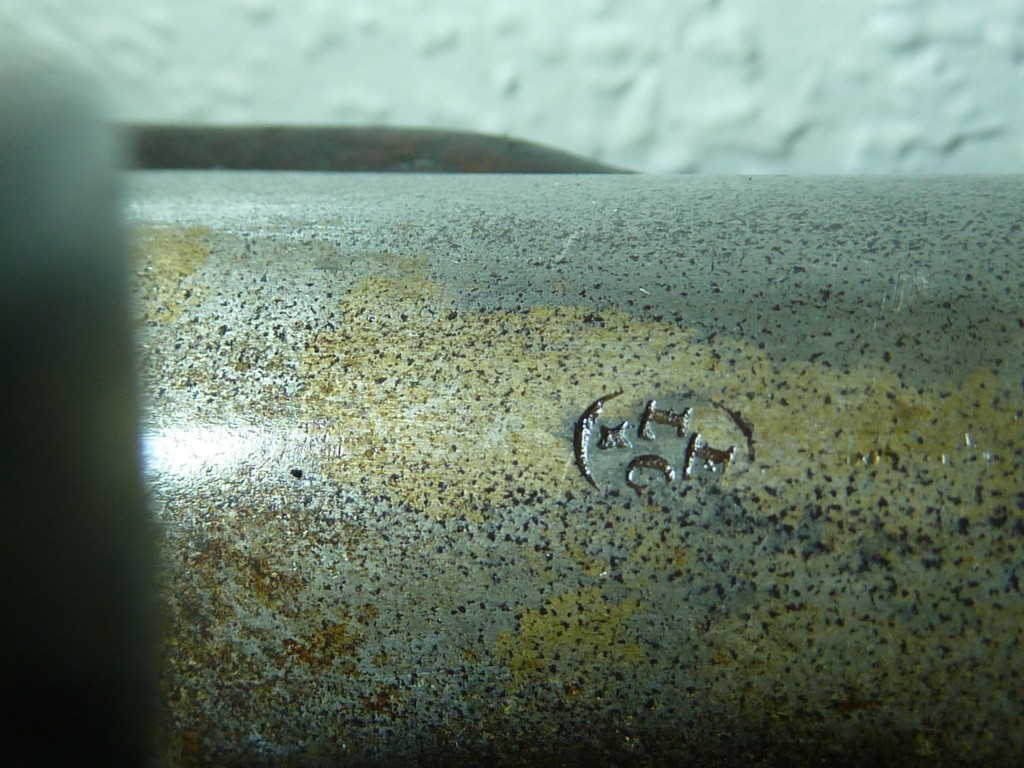
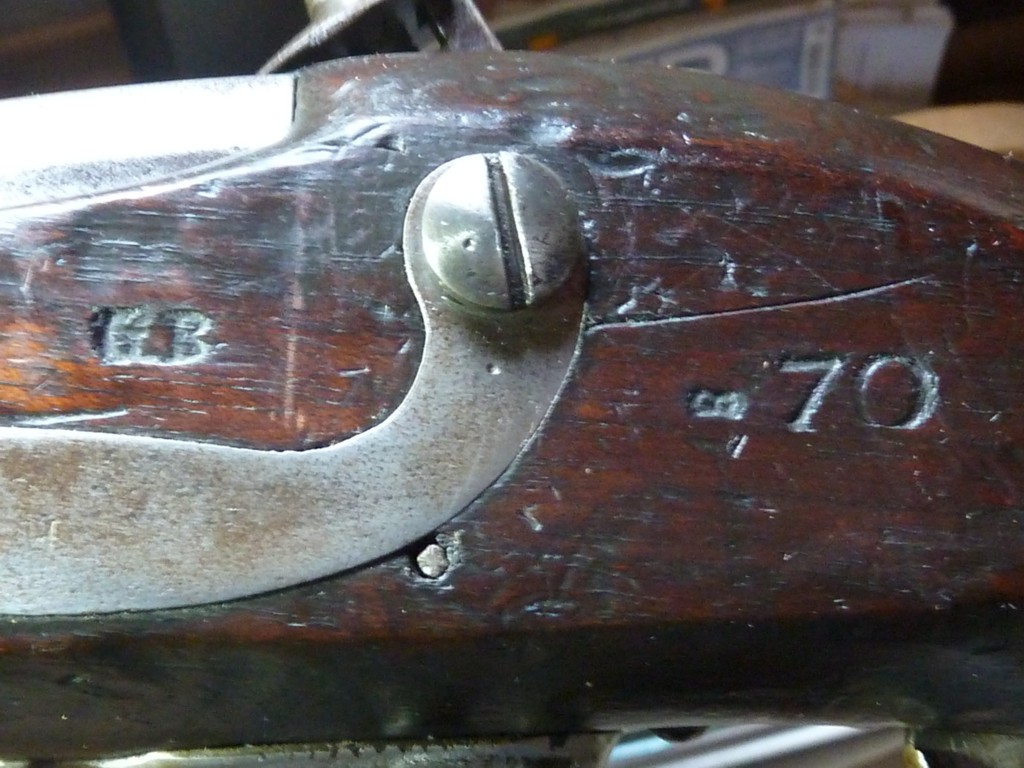
Dresse Laloux & Cie
It is about traditional “a rifle of garden” standard
Warnant
long breech gauges 7 mm Flobert (annular percussion), with squared English stick
with the handle and on part of the wood, with octagonal barrel, trigger guard
with volutes, with the mention
Dresse-Laloux & C° Liege
and the
mark with the bee in a circle with the letters D and L on the wings.
Markings
Peron
(little step) : inspection since 1853
ELG in
oval under crown:
acceptance between 1893 and 1968. These two punches are of application to the
rifles of living room with blasting powder.
R crowned:
rifled bore between 1894 and 1968; question with the owner: is the gun actually
striped?
A (?)
under star:
countermark of the controller since 1877
FL 7 M:
gauge 7 mm Flobert with annular percussion
FH: not identified
Dresse-Laloux
deposited the mark with the bee on January 28th, 1881. It was registered with
the proofhouse of 1867 to 1908. In 1908, the activity was taken over by the
Establishments Georges Laloux.
Jean
Warnant
(1845-1913) deposited not less than 36 patents of which several being able to
refer to the rifle in question, between 1868 and 1873.
This kind
of rifle was produced to thousands of specimens in various gauges with annular
and central percussion.
The
cartridge 7 mm Flobert is not marketed any more since decades, one of the last
known manufacturing going back to 1925.
GP
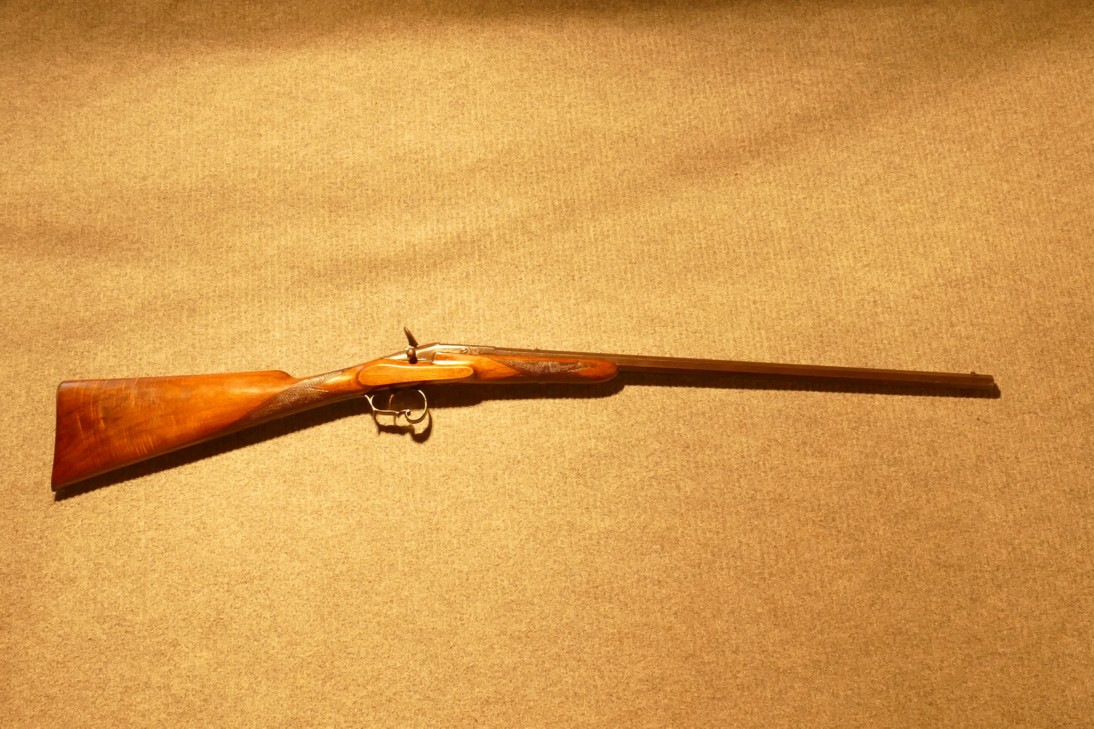
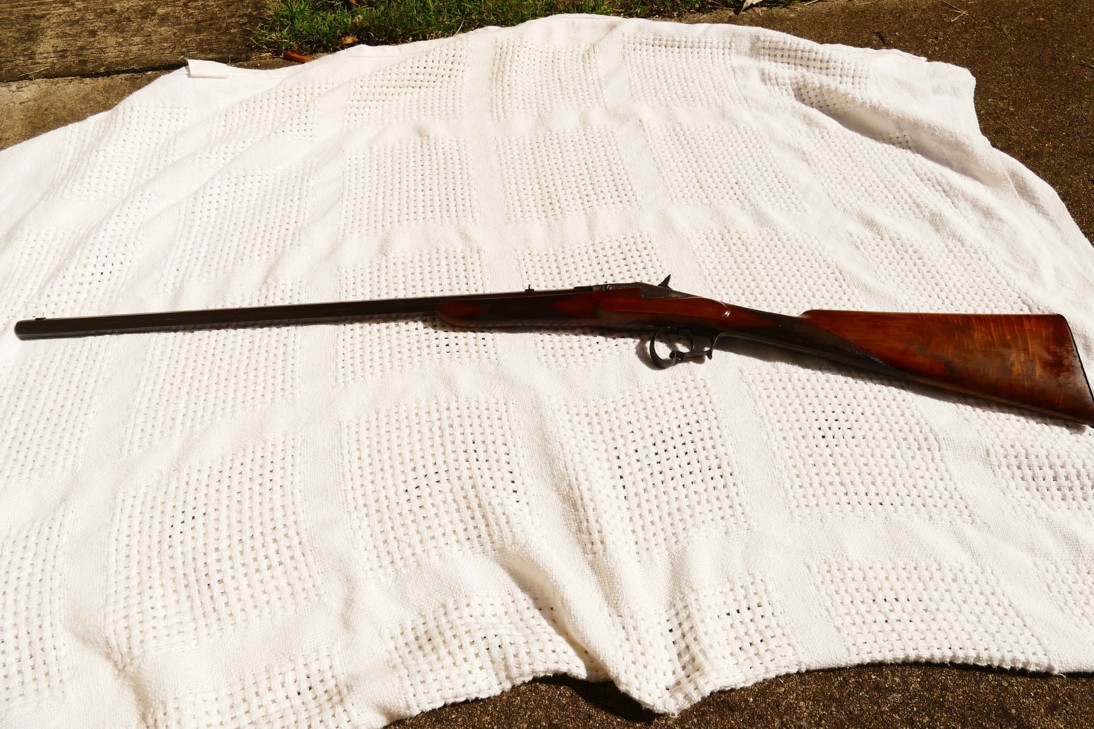
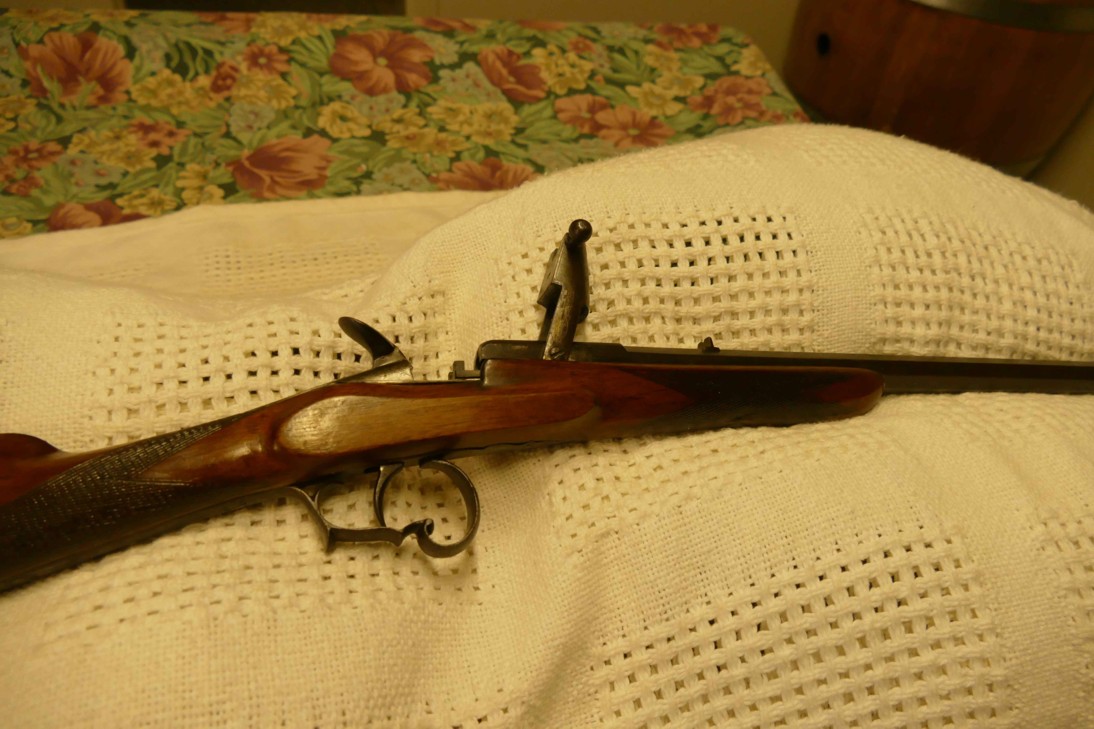
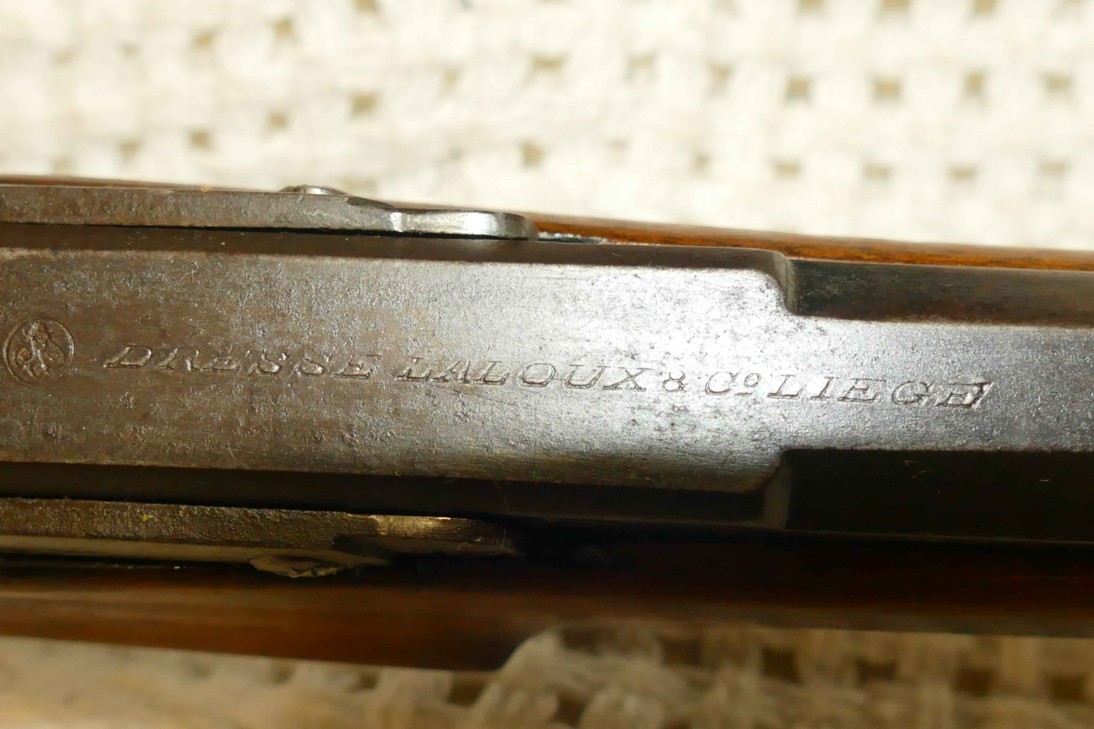
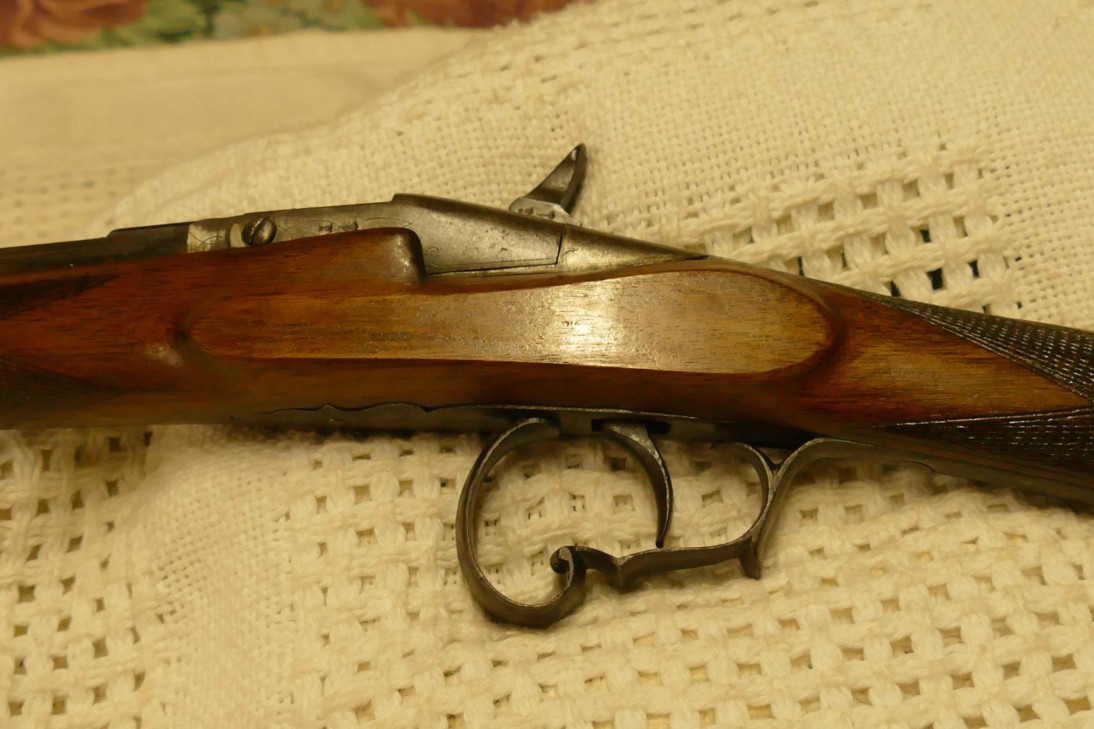
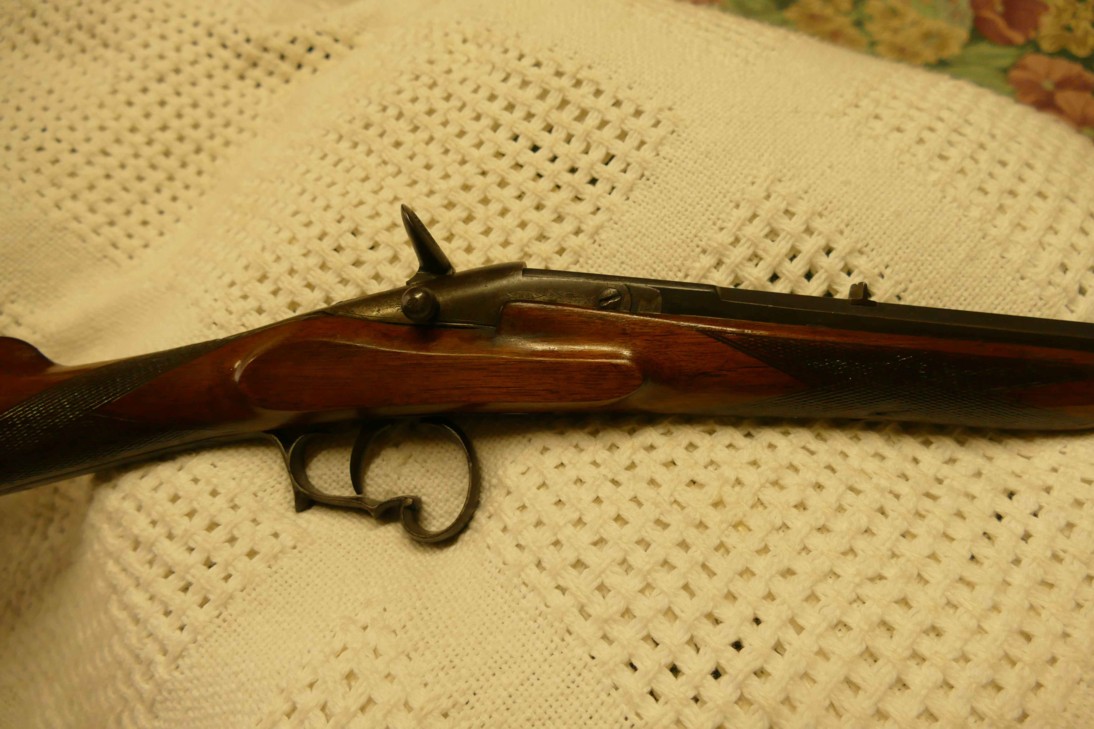
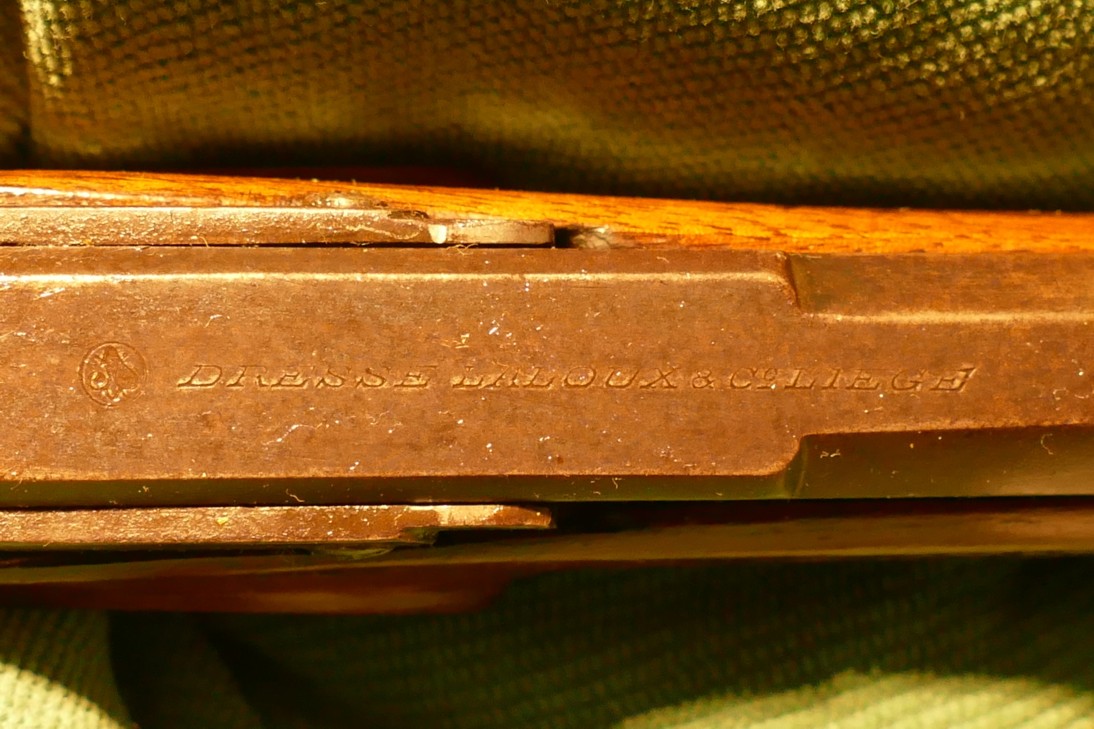
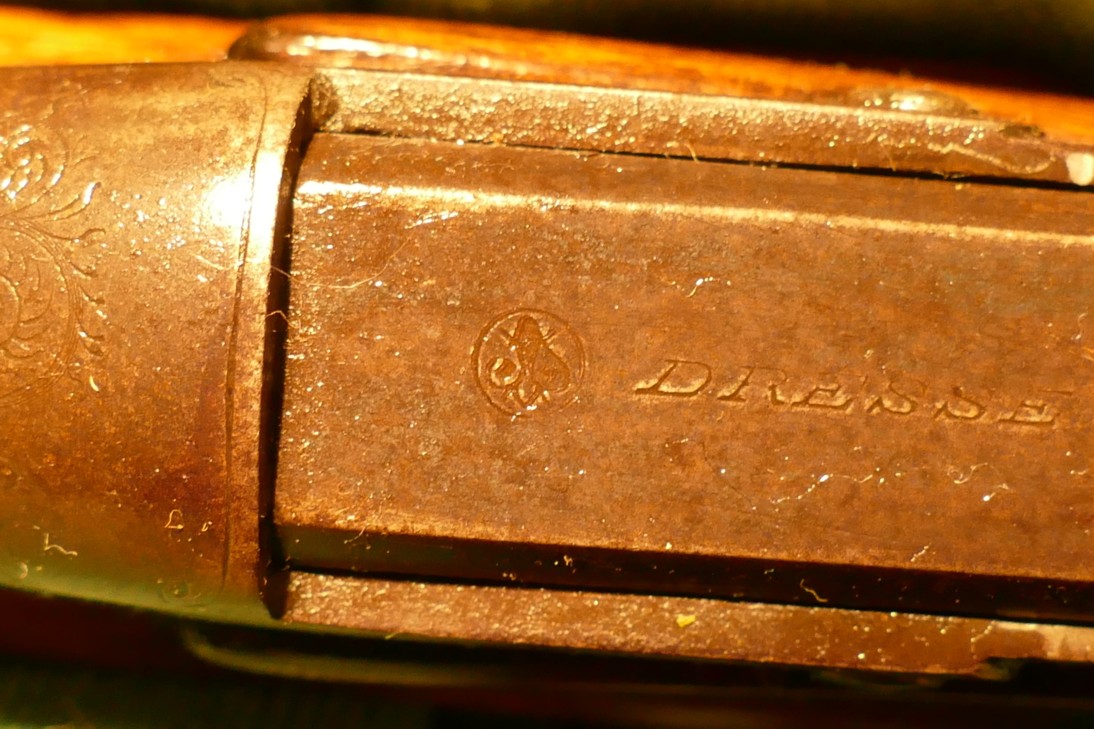
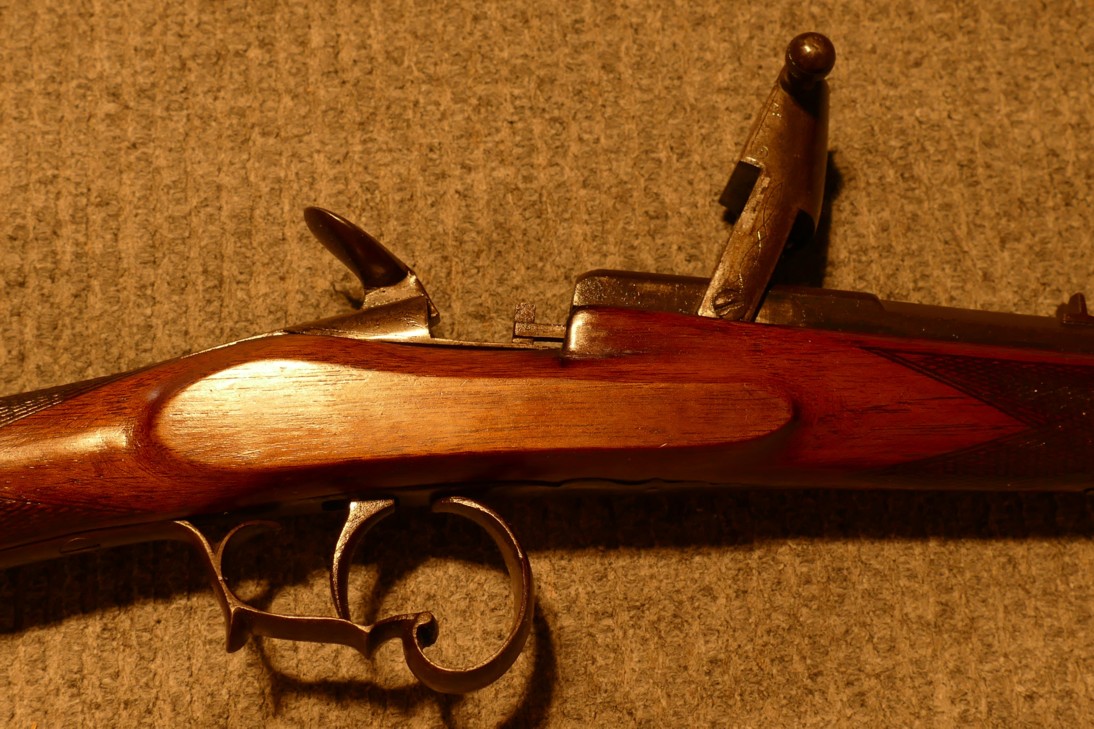
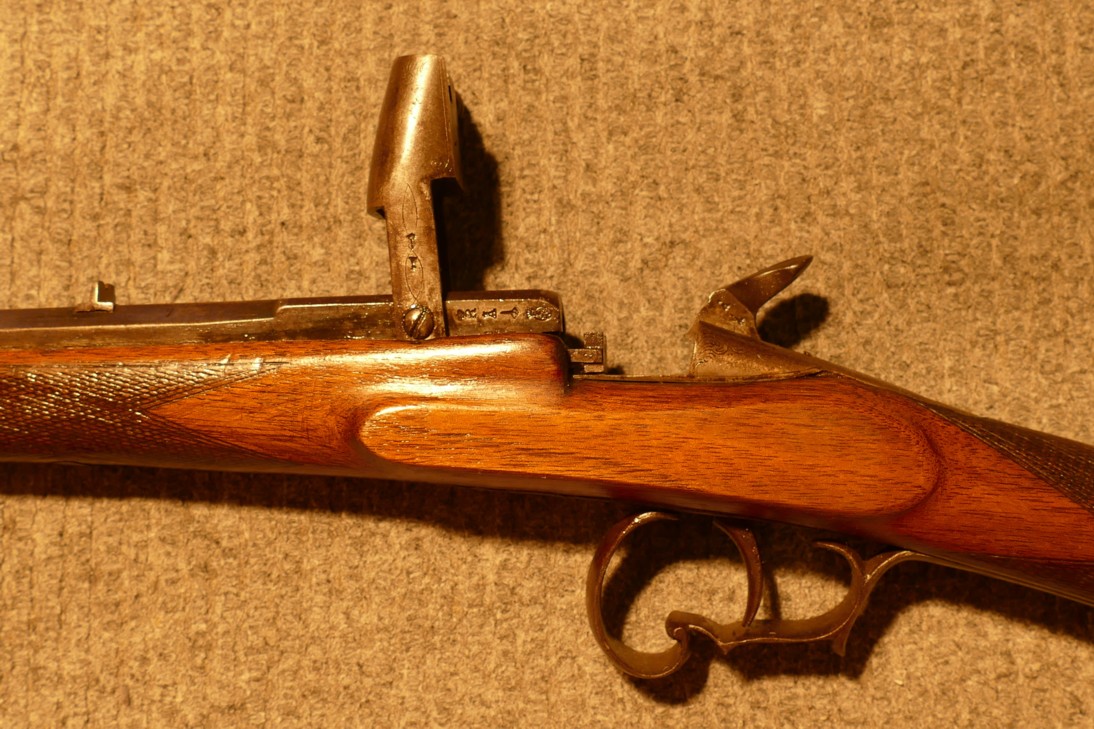
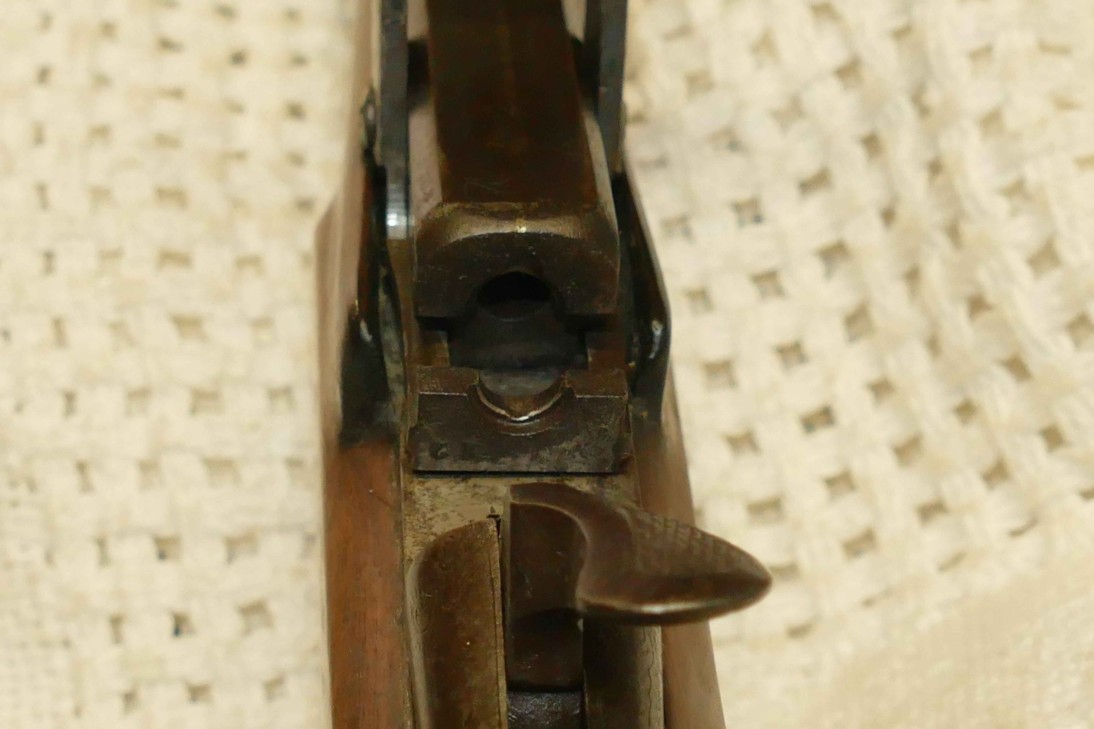
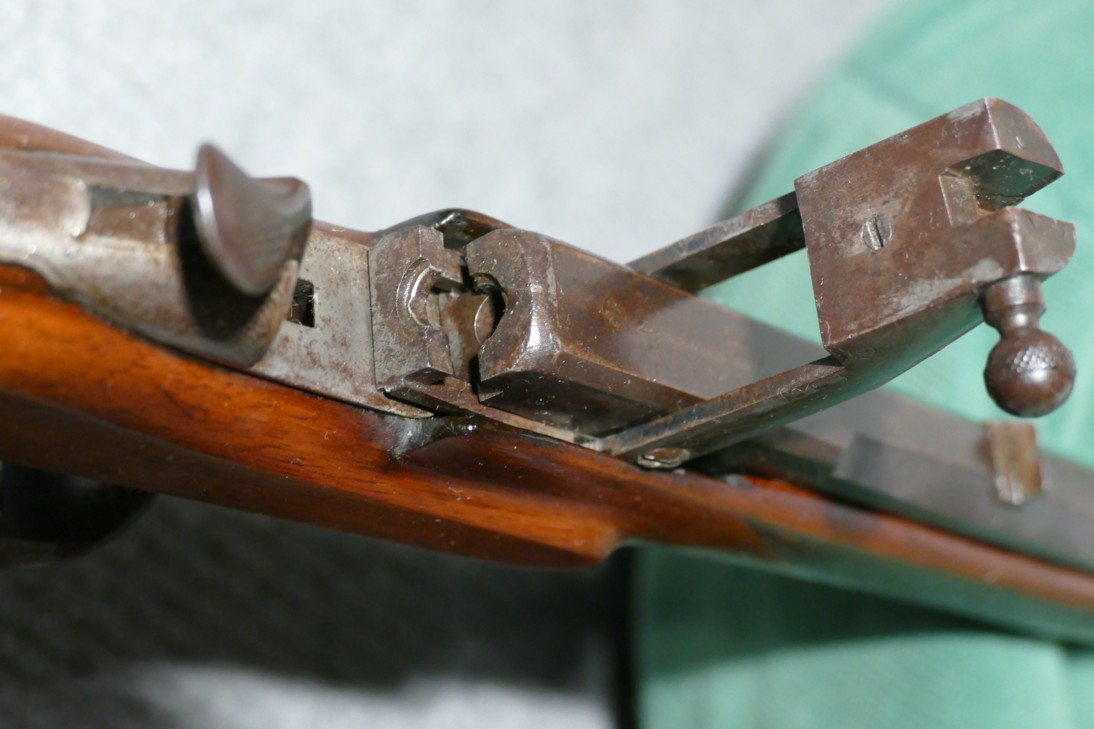
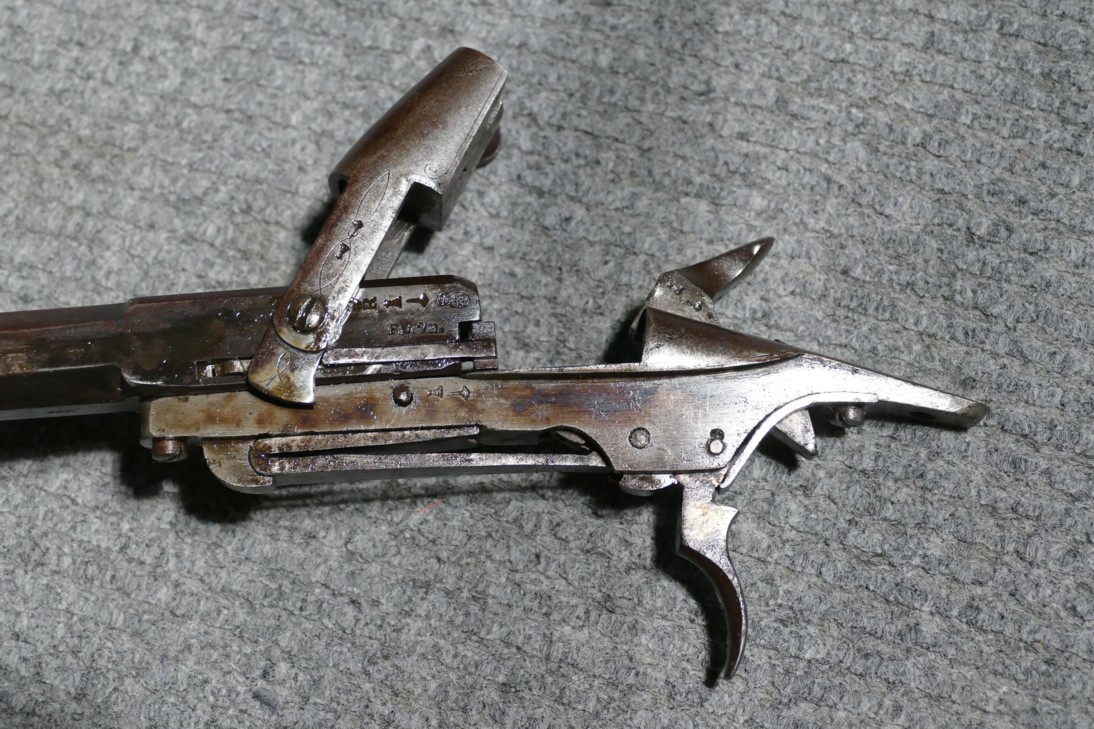
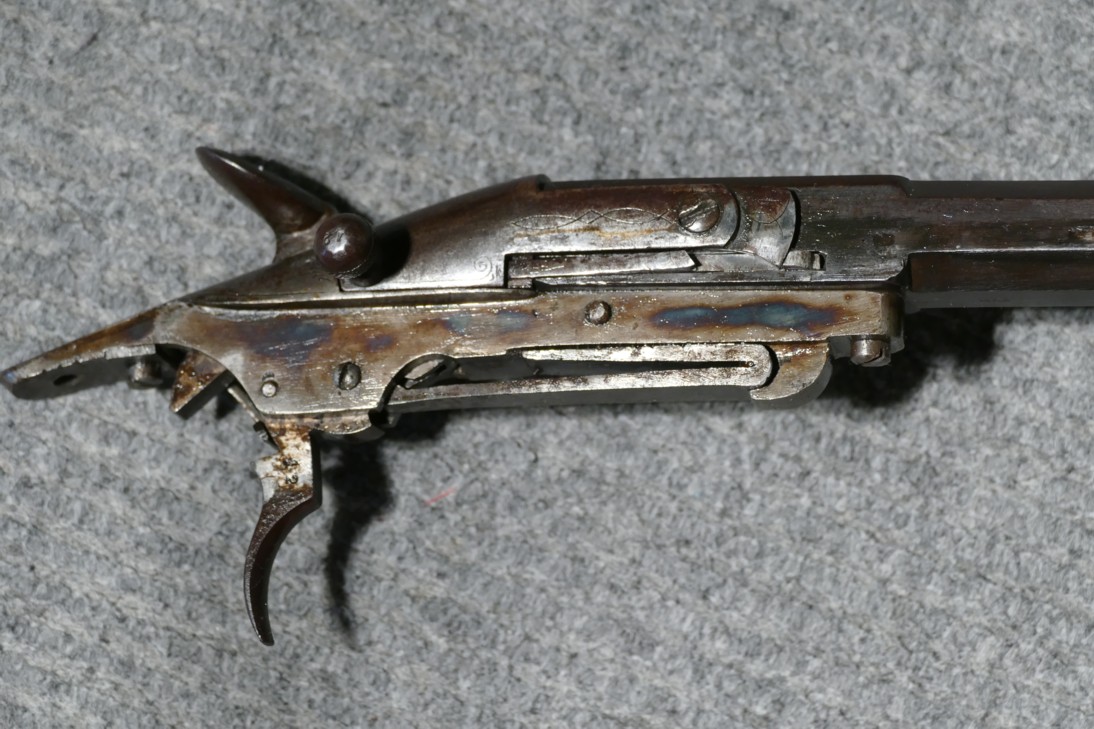
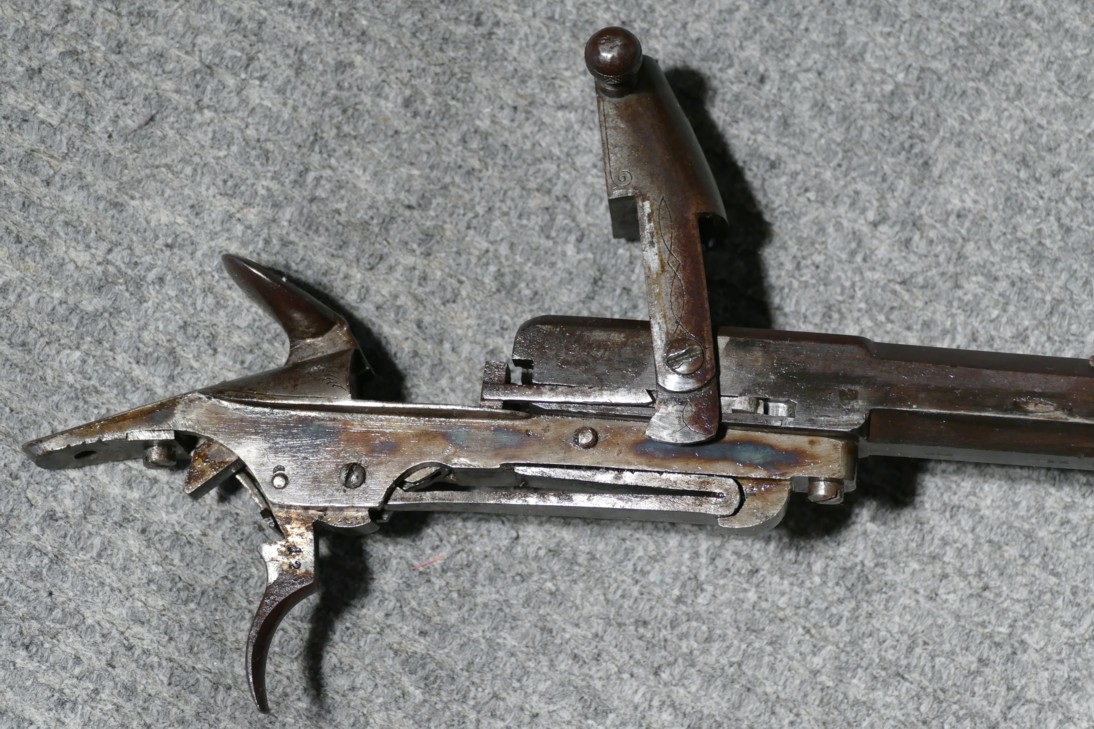
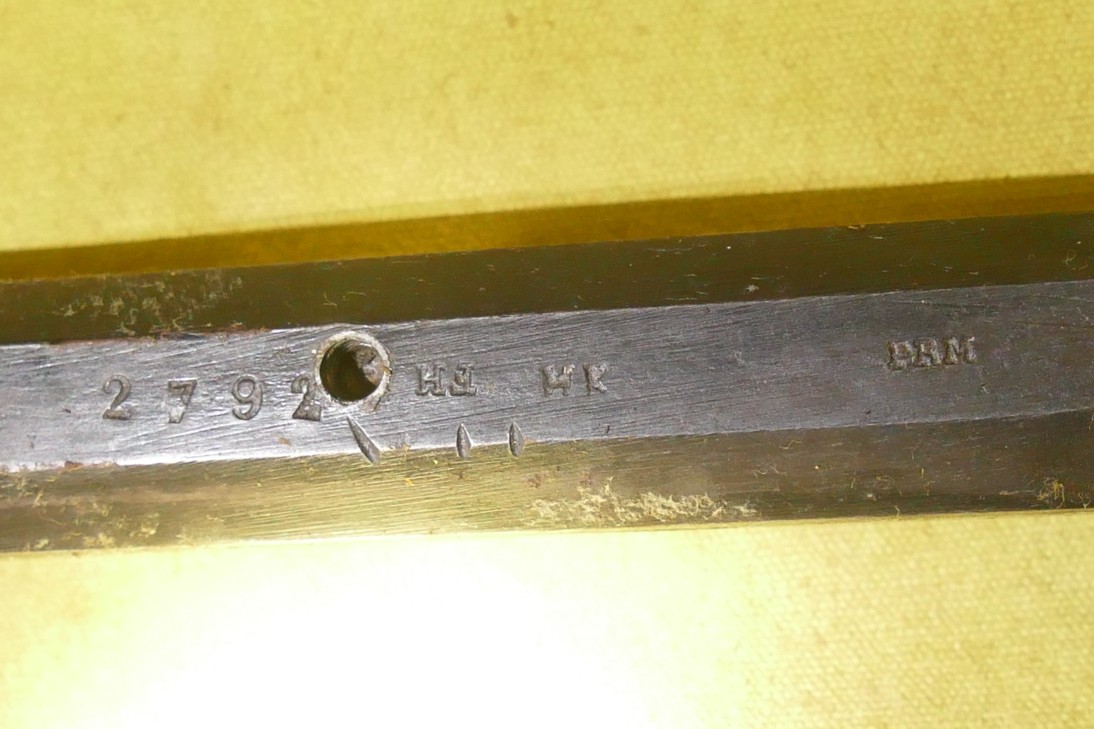
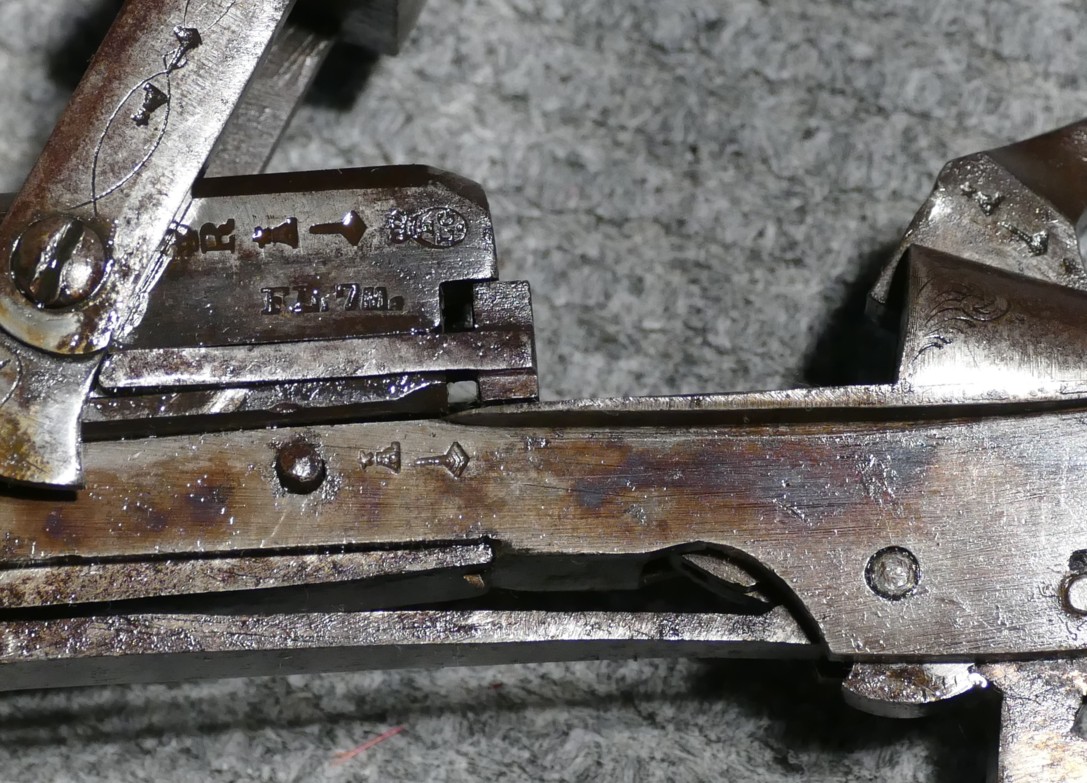
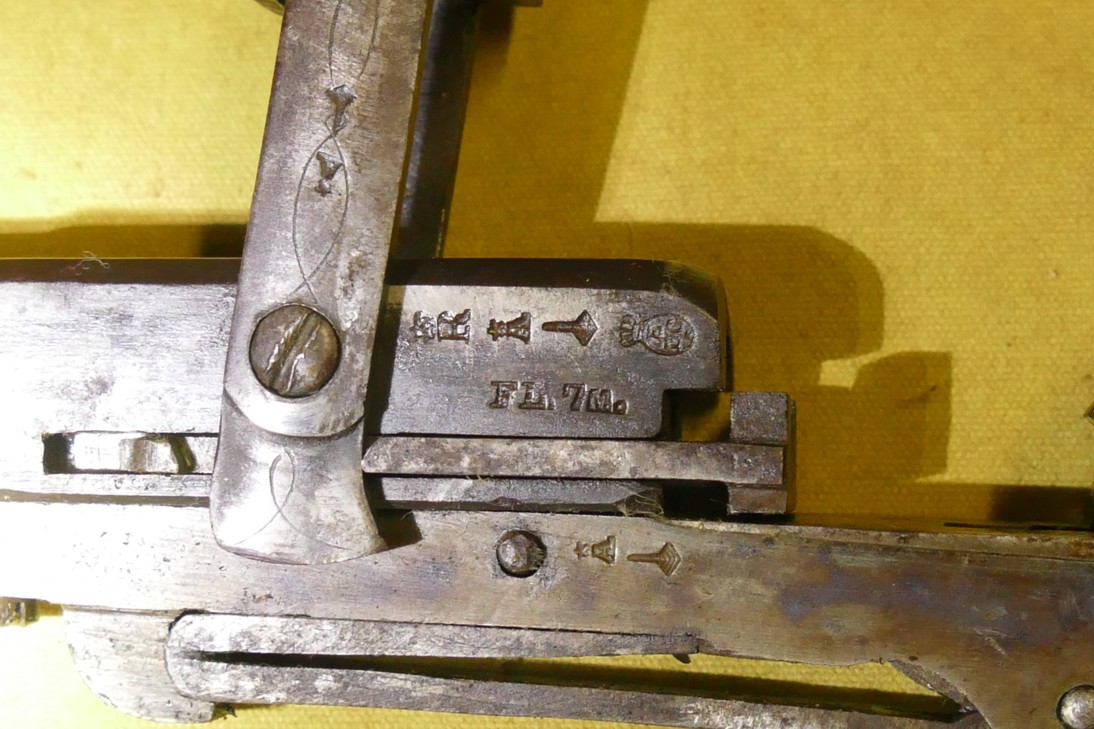
Dresse Laloux
Here is a
shotgun juxtaposed with hammers, with the opening key along the trigger guard.
As shown by the punch with the bee, it is a production of the house of Liège
Dresse-Laloux.
Markings
N and z
under star: countermarks of controllers, since 1877;
ELG on
star in oval: acceptance between 1846 and 1893;
17 4 and
17 8: calibre in mm, since 1889 (?). It should
therefore be a 16 gauge, although 17 8 is closer to a 14 gauge which is 17.
9
mm. A 16 gauge cartridge should therefore be introduced. And above all not to
shoot.....
Perron:
inspection, since 1853.
GP with the help of PHL
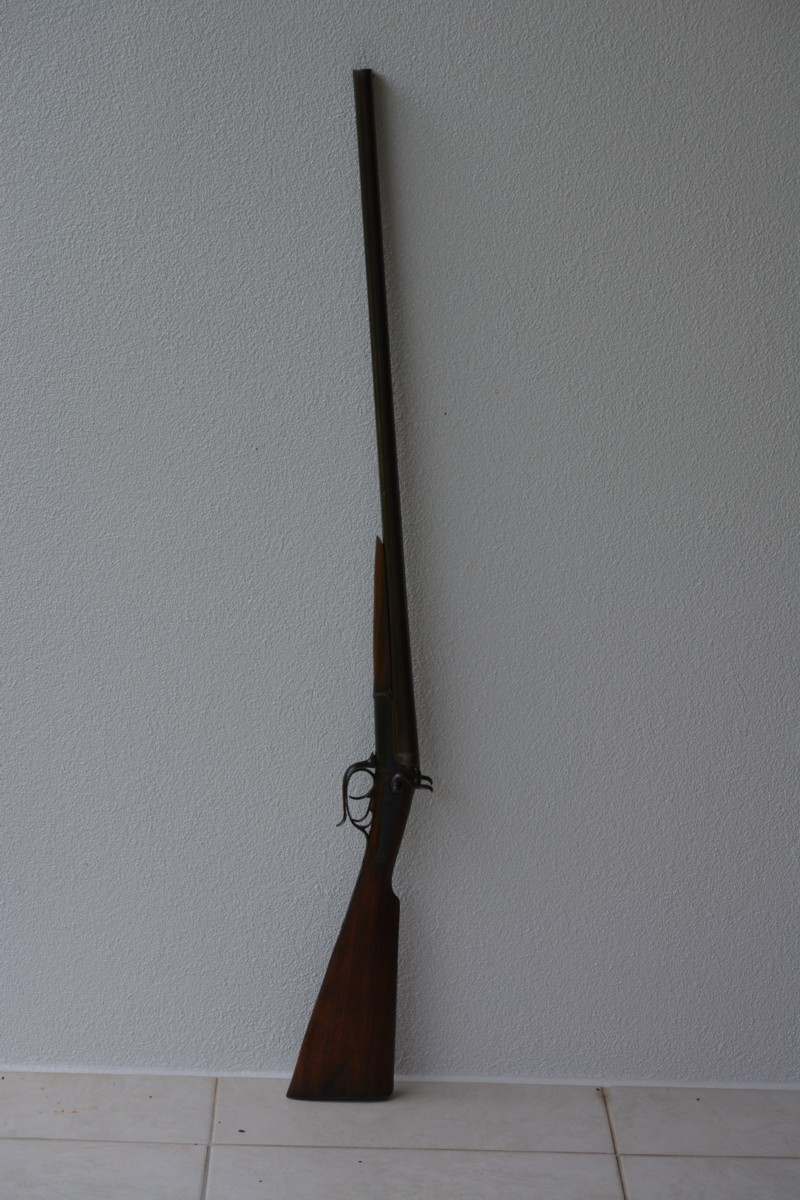
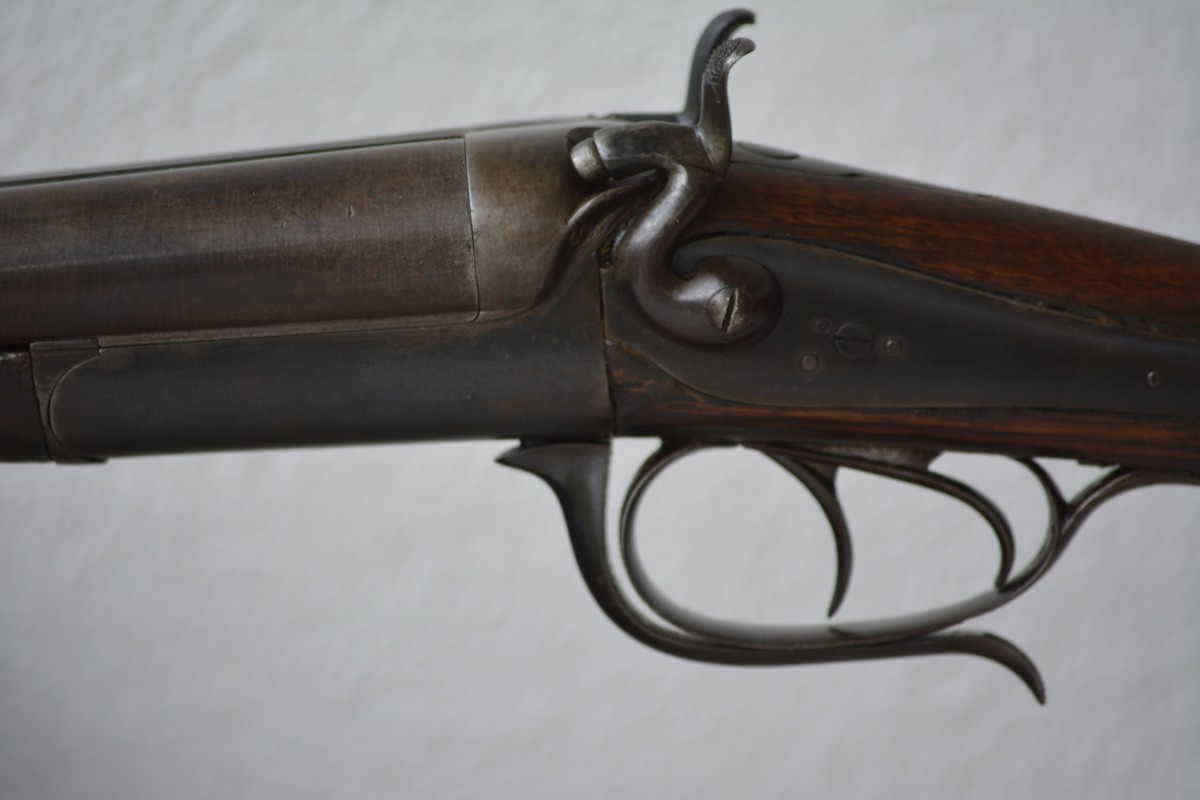
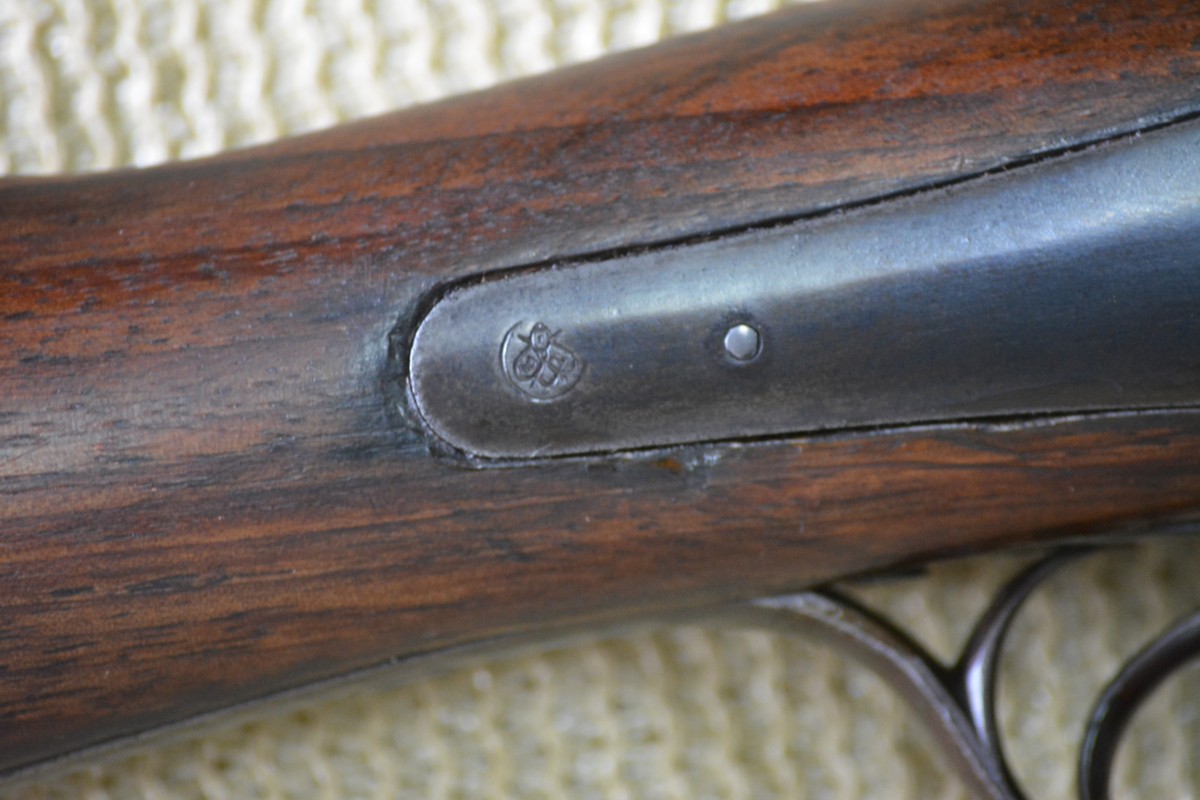
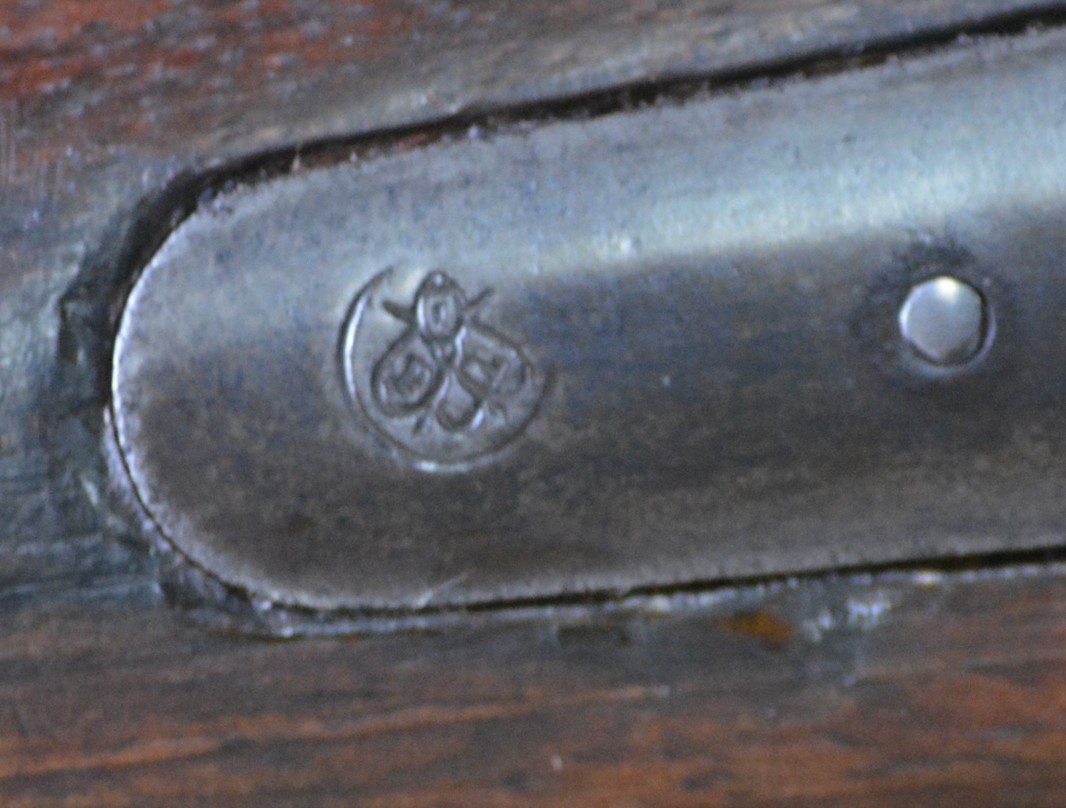
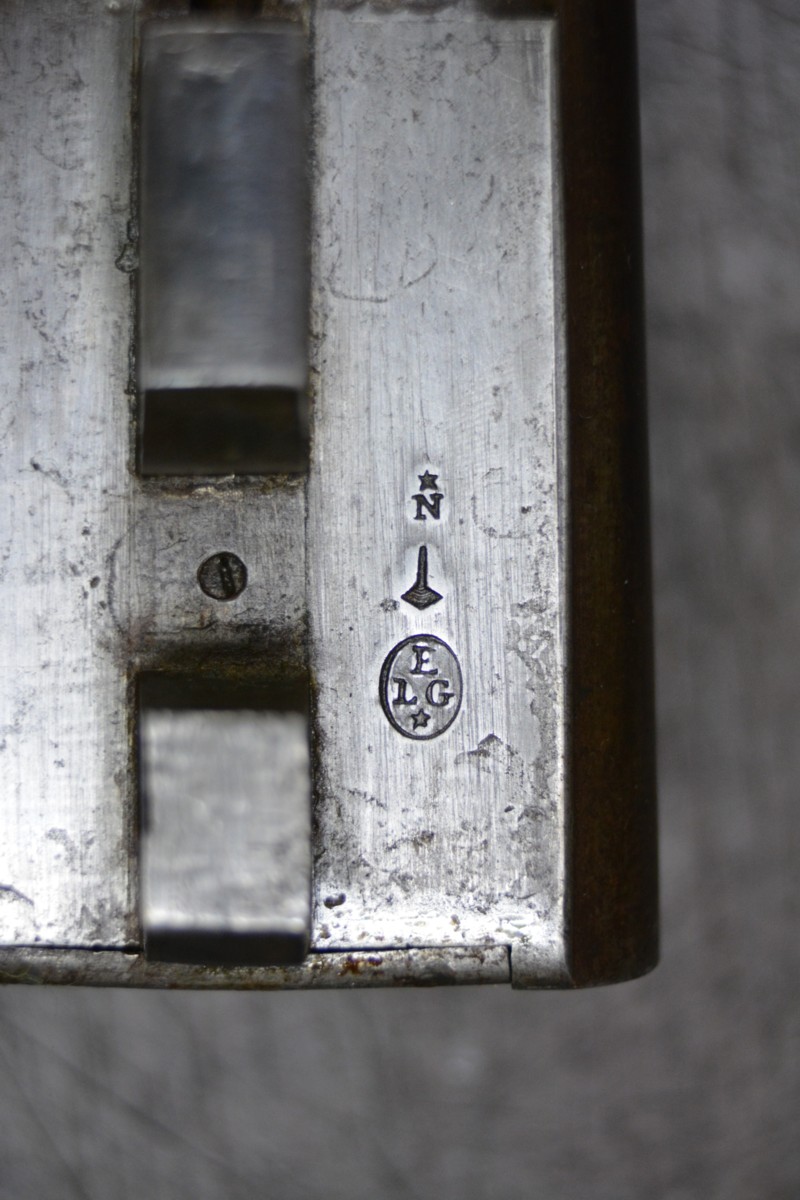
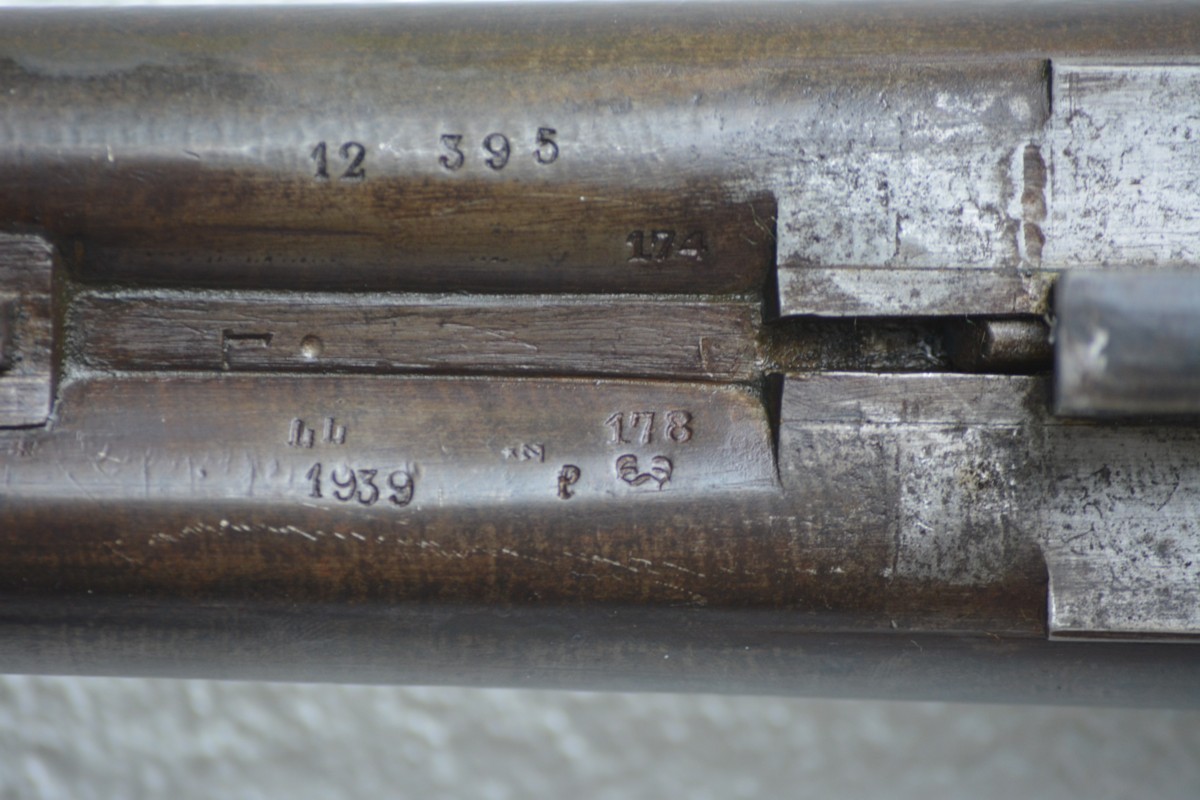
Dresse Laloux & Cie
Here is
a very interesting military single-shot rifle, apparently based on the Martini
system, but with an external hammer. The hammer arms itself when the lever
bridge is operated.
According to what is found on the canvas concerning this rifle, it could be a
test rifle in the context of a competition to find a replacement for the
Comblain rifle that had been adopted for the Garde Civique in 1870. We know that
in the end, it was the 1882 Comblain that replaced him.
The
barrel of the rifle Dresse-Laloux is in any case a true copy of that of the
Comblain 1870.
One
notices of course the marking Dresse Laloux & Cie Breveté Liège on the tail of
the breech, as well as the mark on the stock J. Ancion & Cie 1878.
For more
information on these companies, please consult the following links:
AND
I have
consulted the list of the 25 patents listed (some time ago) filed by
Dresse-Laloux. The only interesting thing is patent 032202 of March 22, 1873,
which concerns modifications to the extractors of firearms loaded by the breech.
Here is
the drawing of the patent in question (thanks to MD):
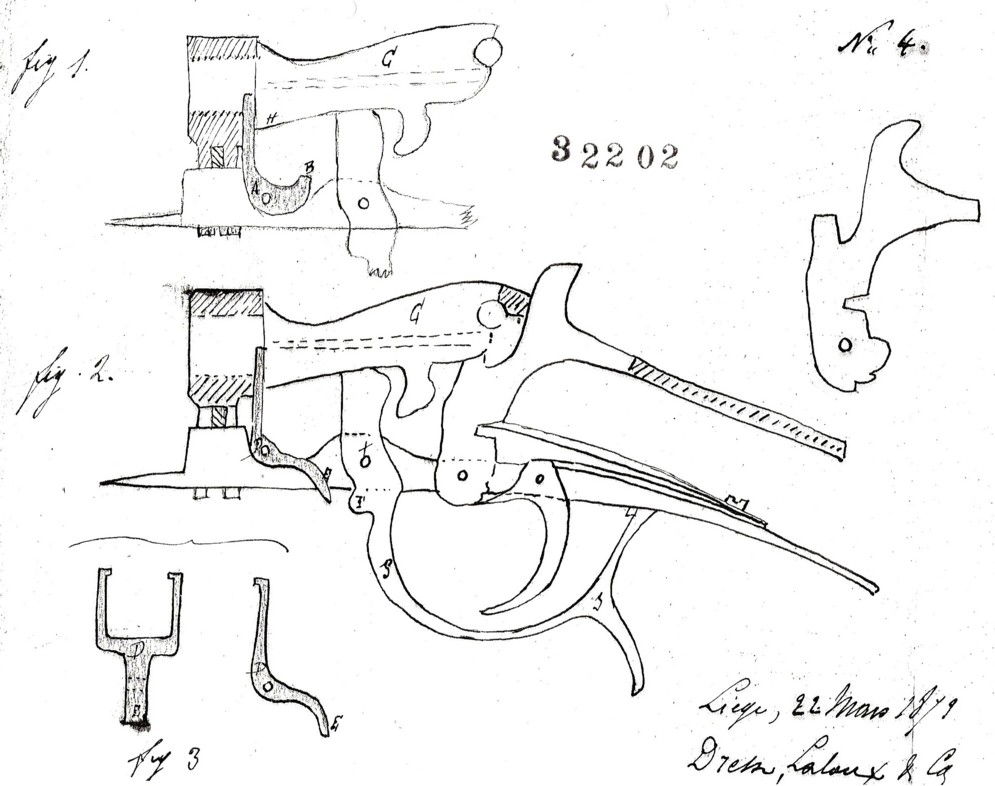
The
resemblance is quite striking.
It would
also certainly be interesting to consult the review of the Garde Civique "Le
Franc-tireur" and the "Revue militaire belge"; which appeared between 1880 and
1889. Perhaps reference was made to these tests to replace the 1870 Comblain.
In the
Belgian Military Review, third quarter of 1880, about an exhibition held that
year on the initiative of the Liège Union for the manufacture of weapons of war,
is the catalogue of the weapons exhibited. Thus, on page 103 under No. 58 is a
"rifle with bayonet sword" from Dresse-Laloux, and on the following page, a
cavalry carabiner under No. 83, also from Dresse-Laloux. But no drawing
unfortunately......
A member
of the team found the patent of a rather similar weapon due to the combined
genius of Malherbe and Salle: here is the patent 30263 of March 21, 1872:
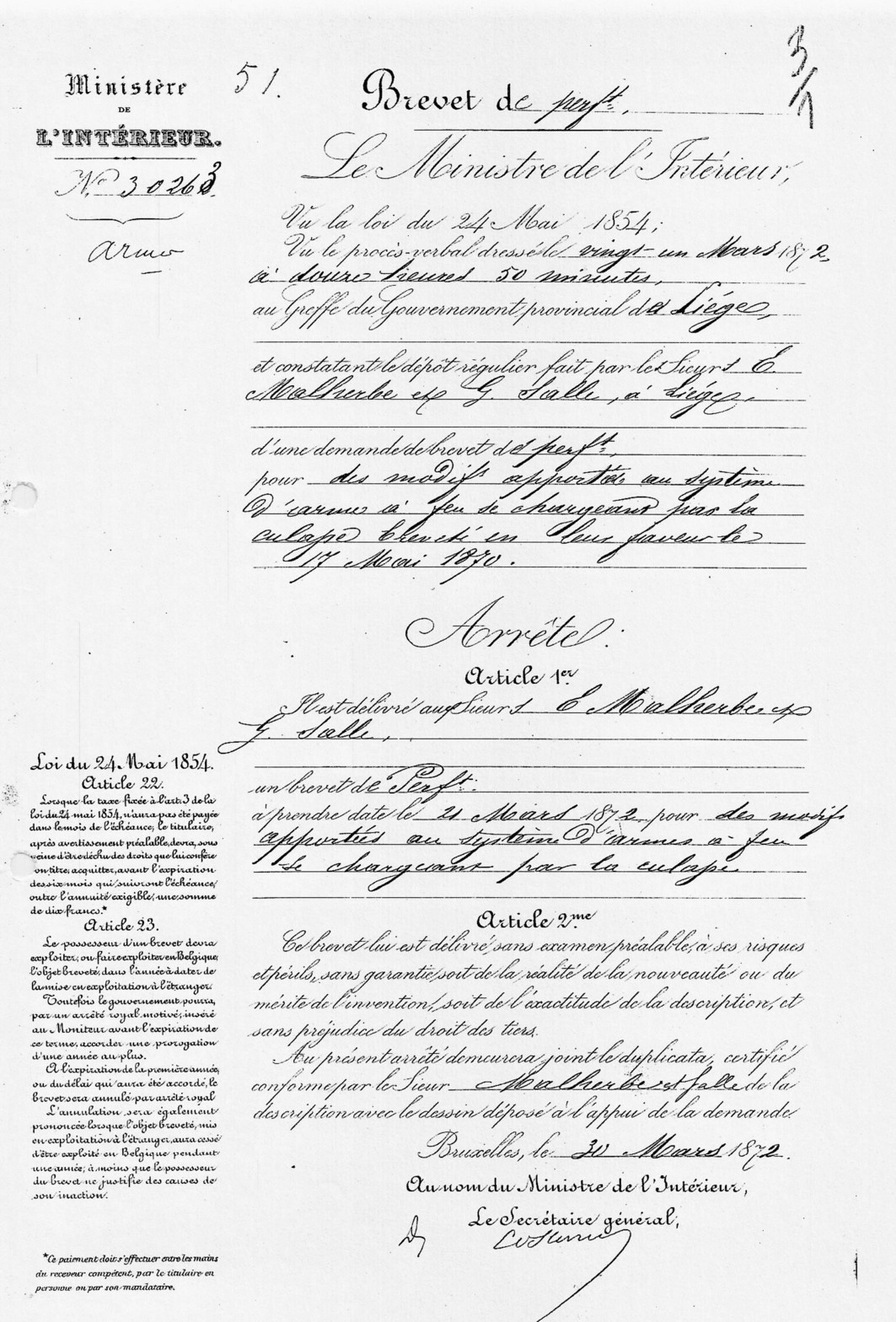
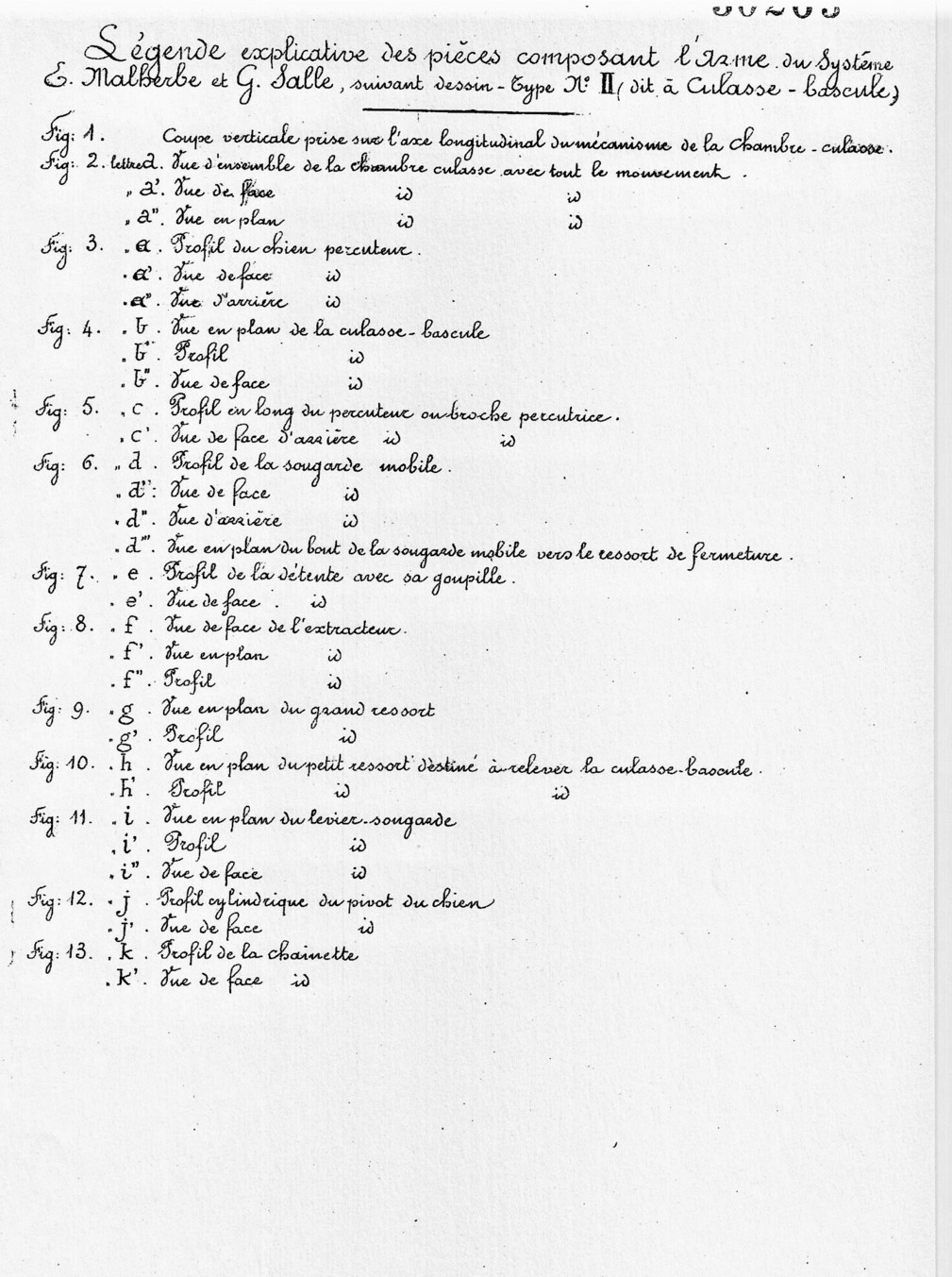
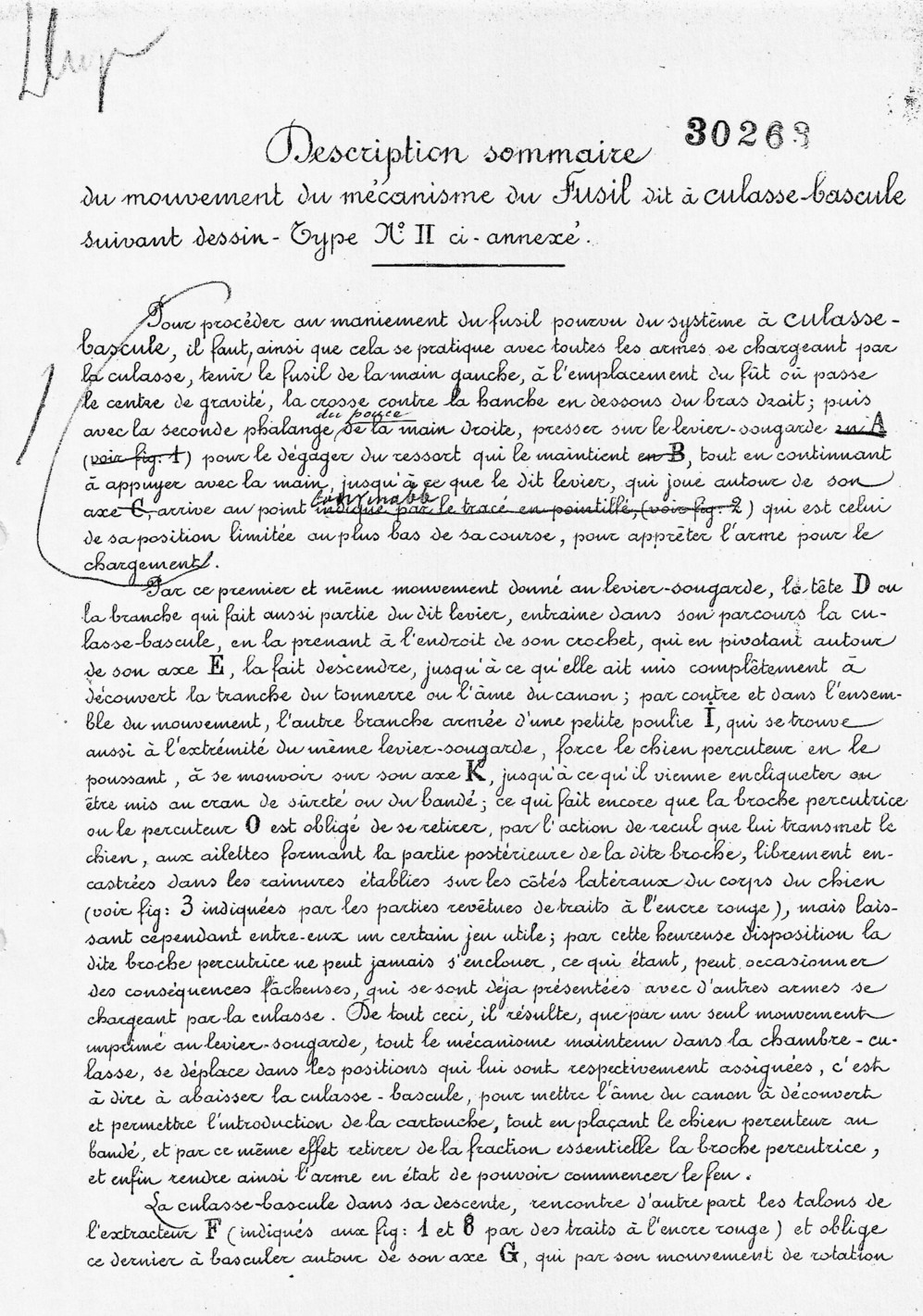
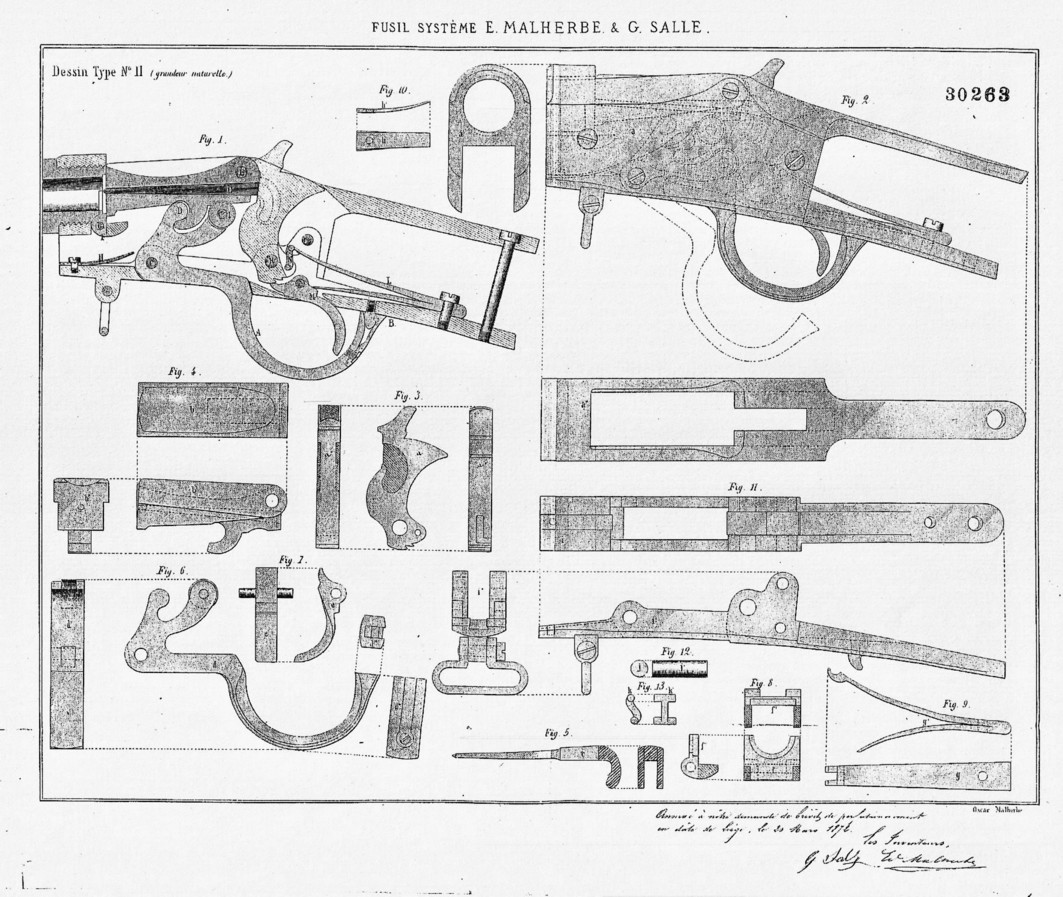
And here
is the weapon in question, which is in the collection of the Count de Ribaucourt
of the War Heritage Institute. There's certainly an air of resemblance, but
alas, I don't think it's the same weapon:
It is in
any case very astonishing that there is NO punch (visible) of the proofhouse of
Liege NOR of the Manufacture d'Armes de l'Etat, organs by which all the weapons
intended for the Belgian armed forces obligatorily passed. Maybe there's some
under the barrel?
Finally,
it should be noted that there is a Dresse-Laloux mechanism at the War Heritage
Institute that has not been installed. We should be able to compare.
GP with the help of HPH, MAX, AD and Paul Dubrunfaut from WHI.
Dresse Laloux & Cie
Here is a very classic garden rifle of caliber .410,
system called Warnant, manufactured by
Dresse-Laloux.
The
markings:
EL:
provisional test since 1852
J and m
under star:
countermarks of controllers, between 1877 and 1968
Peron:
inspection since 1853
10. 2:
diameter in mm, probably from. 410/12 mm. To be checked by the happy owner.
I am
surprised not to see the ELG on star in oval, crowned or not.
According to the "Who's who of the Liège armoury" the
Former
Fabrique Dresse-Laloux was registered with
the proofhouse between 1867 and 1908.
In 1862, the company took over the activities of Ancion et Cie (Proofhouse 1842/1862) and the Fabriques d'Armes de Liège (proofhouse 1837/1862).
In 1867, Ancion withdrew and continued its own activity.
In 1908, the activity was taken over by Etablissements Laloux Georges.
It should be noted that
Dresse-Laloux
filed no less than 24 patents and the trademark
Imperial Gun
C° on November 22, 1892.
GP and MD.
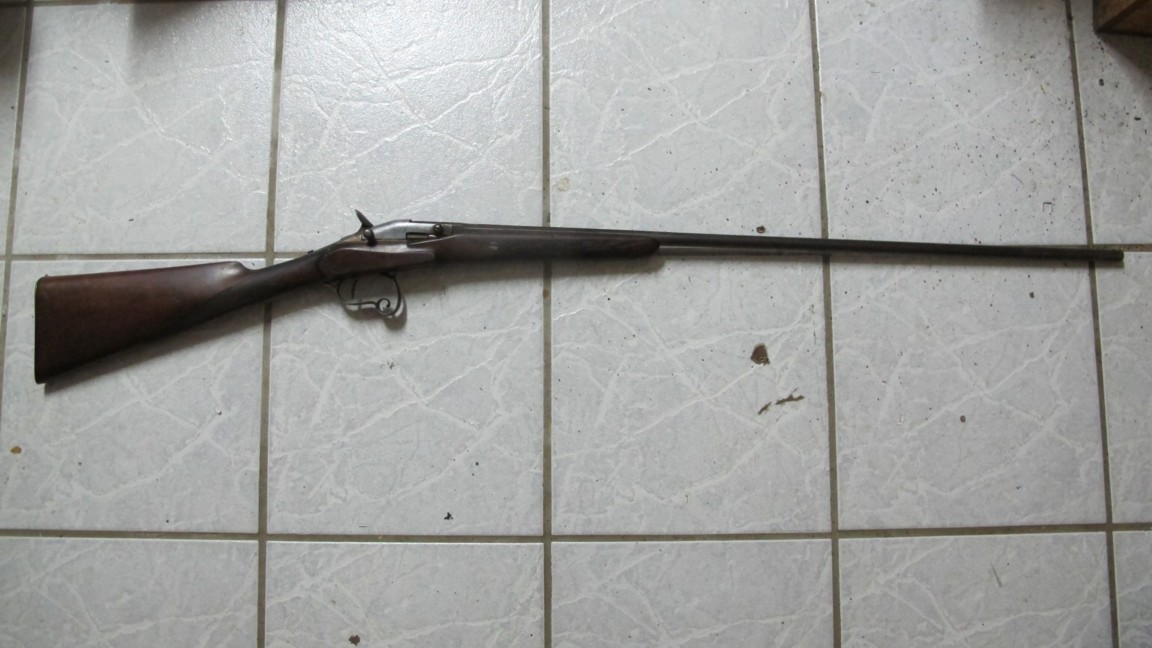
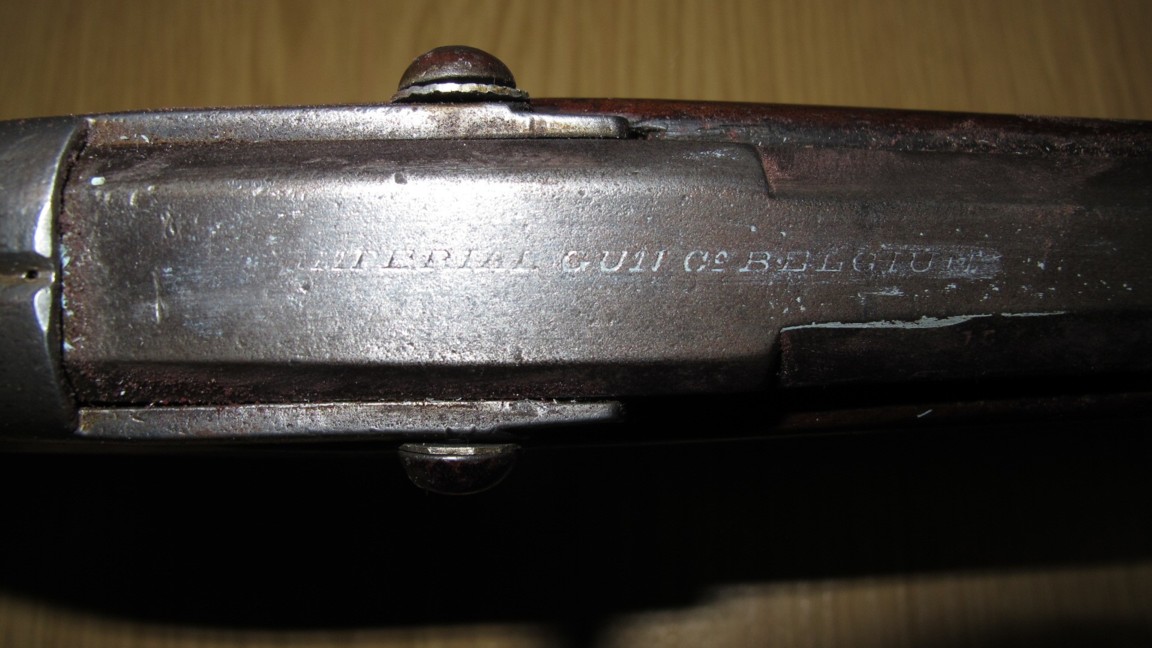
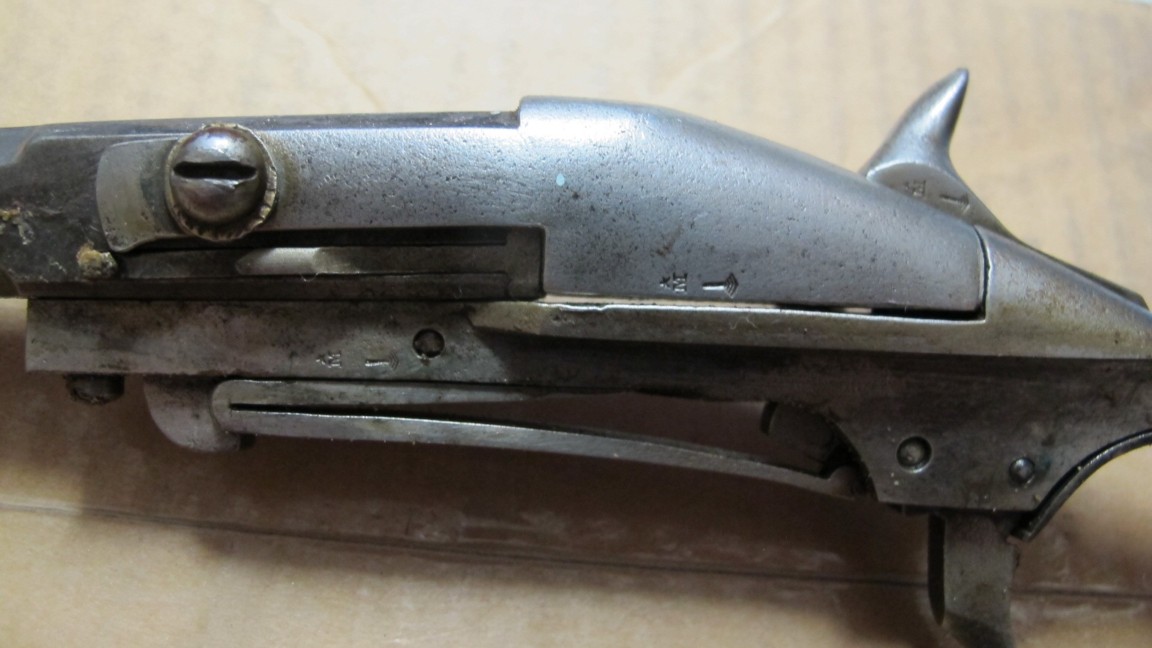
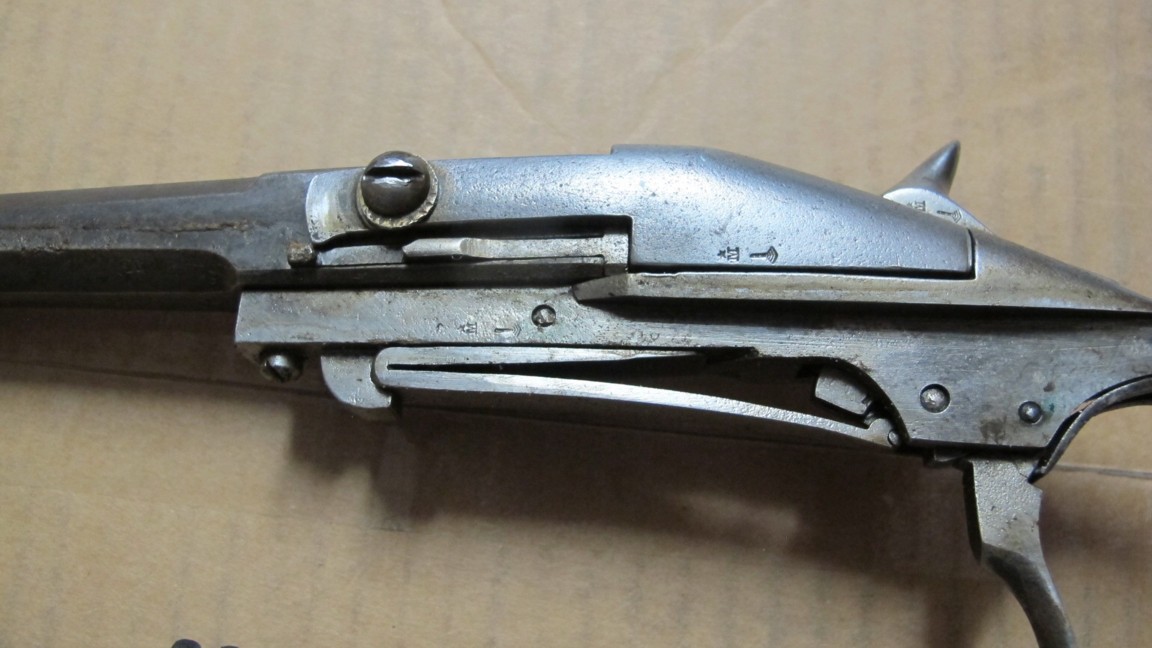
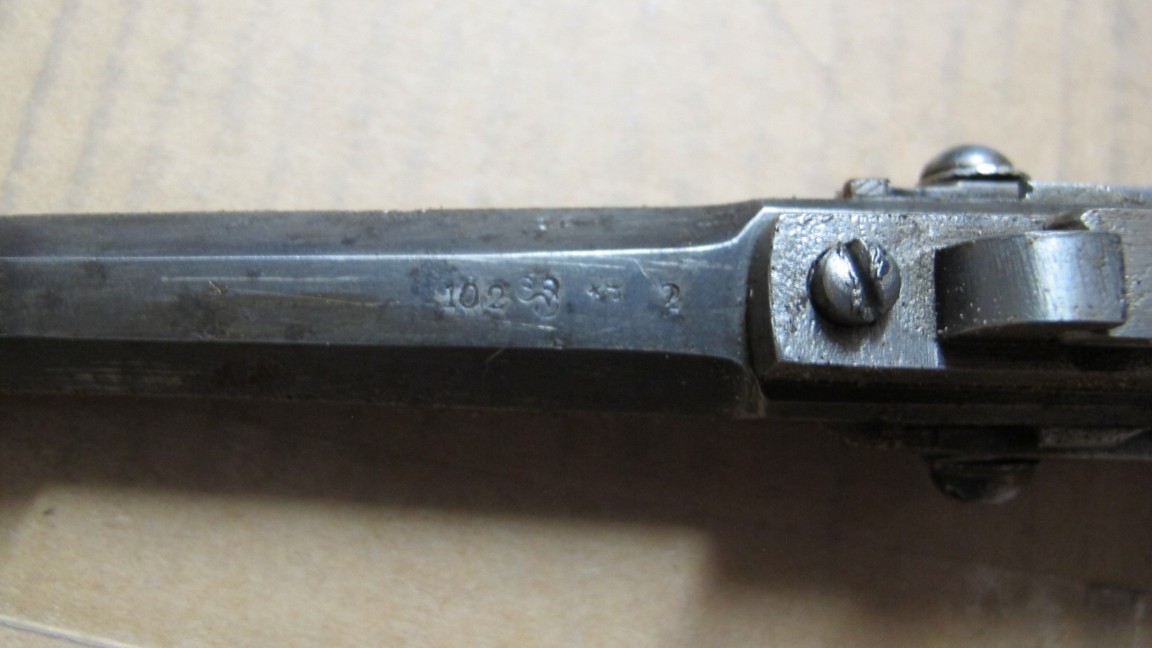
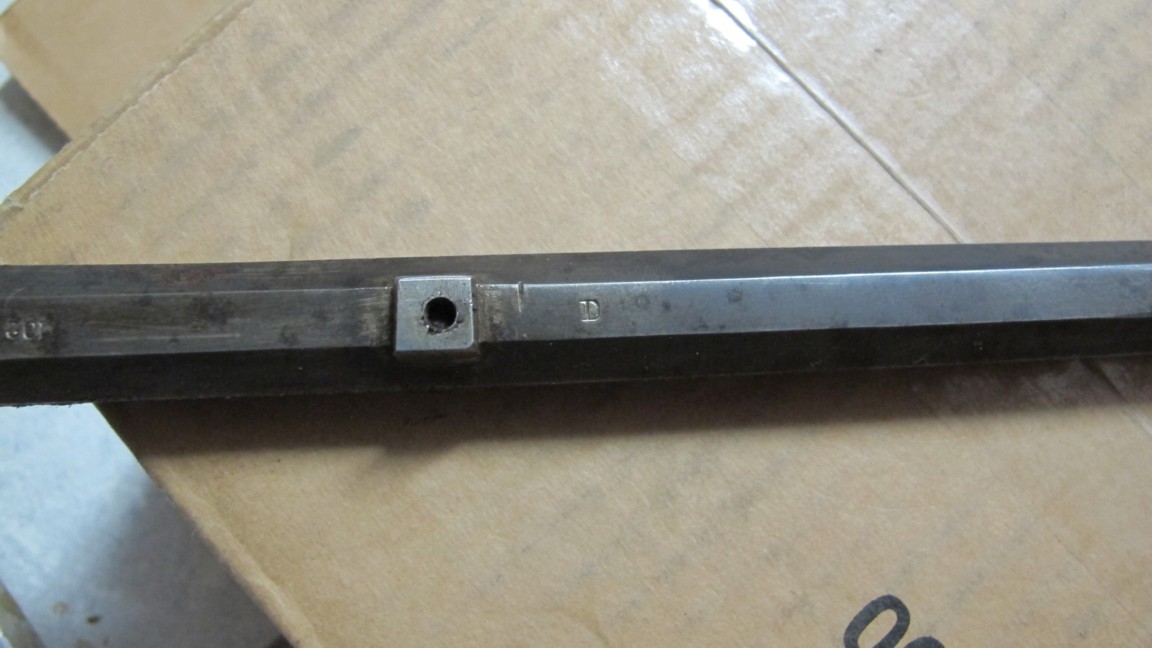
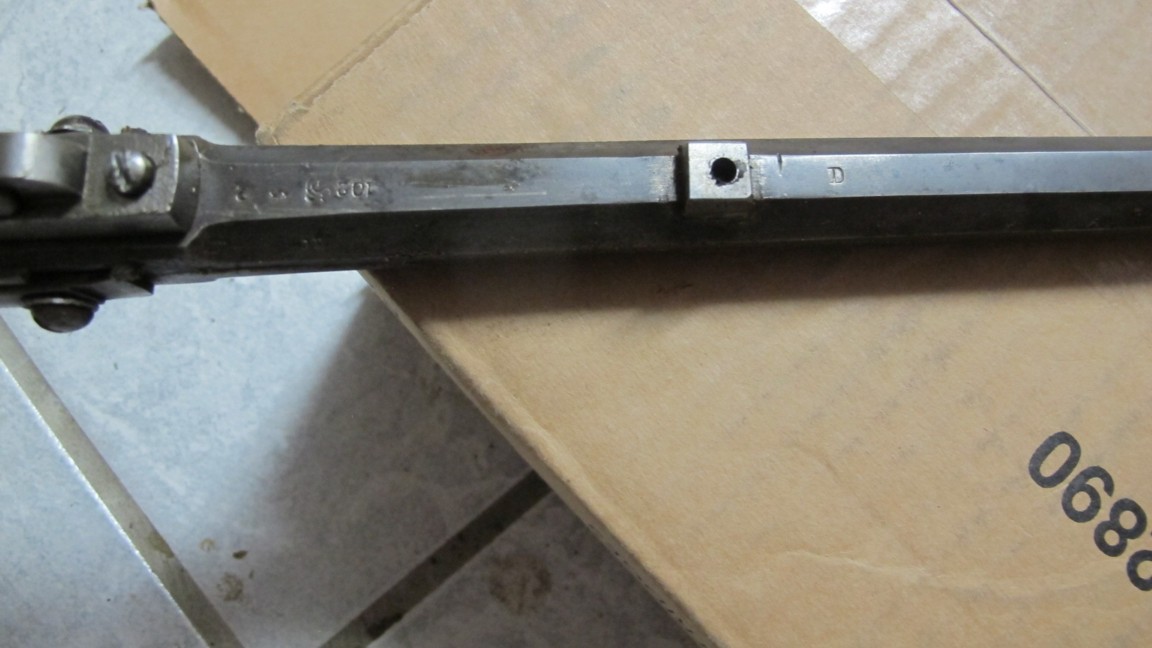
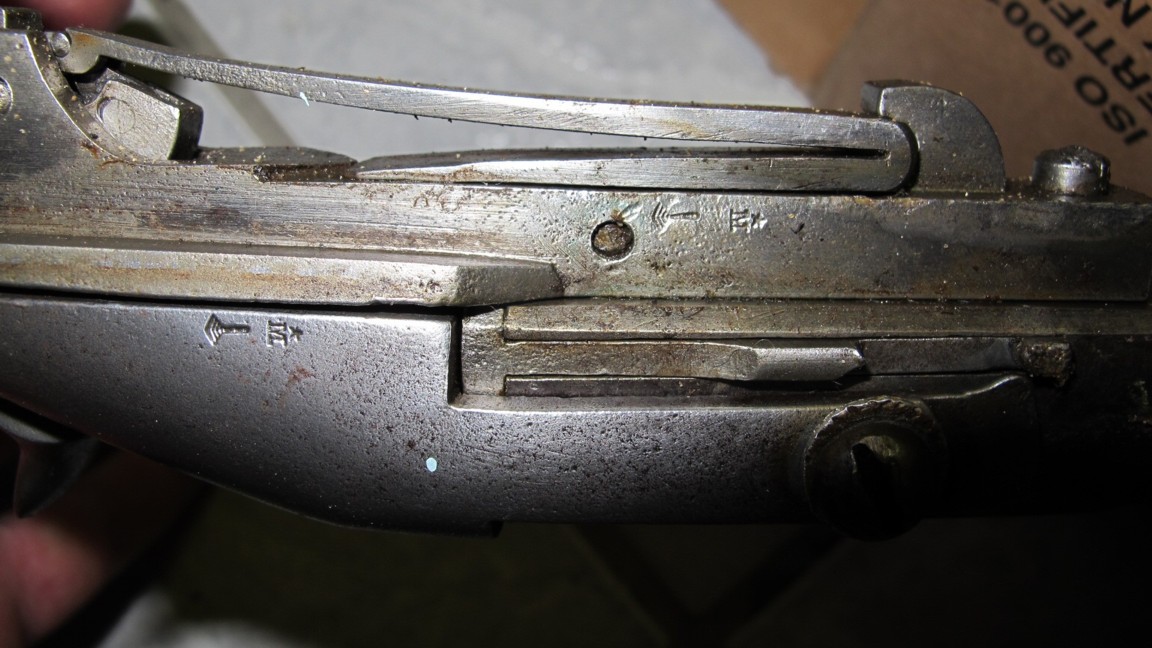
Dresse Laloux & Cie
Revolver with central percussion and box frame.
The cylinder is smooth but the photographs don’t show the number of rooms nor the gauge?
The barrel is with 6 sides. The rod is used as axis with the barrel.
I am unaware of the use of the offset wrench placed on the left side in front of the barrel bus without photographs of the partially dismounted weapon difficult to have an idea.
The loading is practiced by a swivelling door placed on the right side behind the barrel.
The plates out of squared wooden are connected by a transverse screw and two rivet washers.
Punches
The weapon carries the punches of tests of the proofhouse of Liege, namely:
ELG on star in a vertical oval: final acceptance, of use of 1846 to 1893.
G crowned: countermark of the controller, of use of 1853 to 1877.
Markings
Bee carrying letters DL on the wings: mark of factory of company DRESSE-LALOUX & Co, street on the Fountain, 47 in LIEGE. Mark deposited the 28.01.1881. Were these trademarks to be confirmed each year (taxes?) the date above is probably the date of origination.
LORON + letters illegible: it is probably about the mark of the inventor of the weapon which will have made manufacture a series of revolver at DRESSE-LALOUX not having itself the industrial capacity to manufacture some in a significant number? There were several LORON of which PIERRE-ANTOINE, HENRI-CALISTE and PAUL-LEON, I am unaware of which am concerned for the present weapon.
I examined the patents of Pierre-Antoine without discovering corresponding patent.
Idem at DRESSE-LALOUX!
The crowned square mark is illegible! I then thus to try to identify it!
The BIRMINGHAM mention was probably brought subsequently for commercial reasons.
In appendix: a publicity DRESSE-LALOUX.
GG
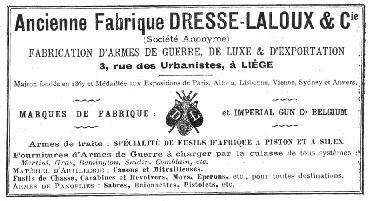
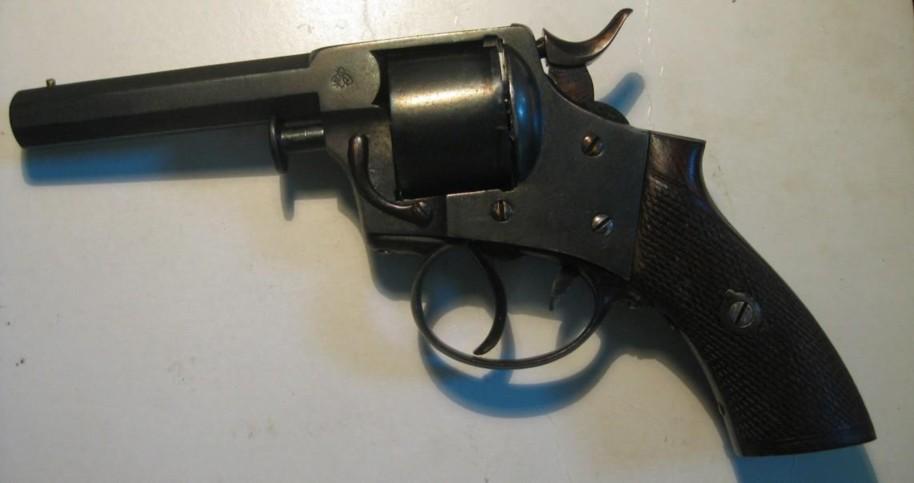
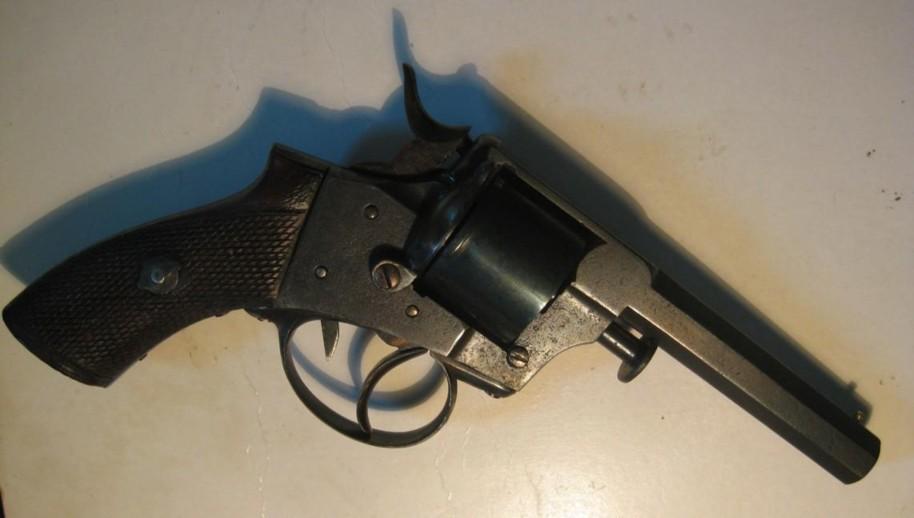
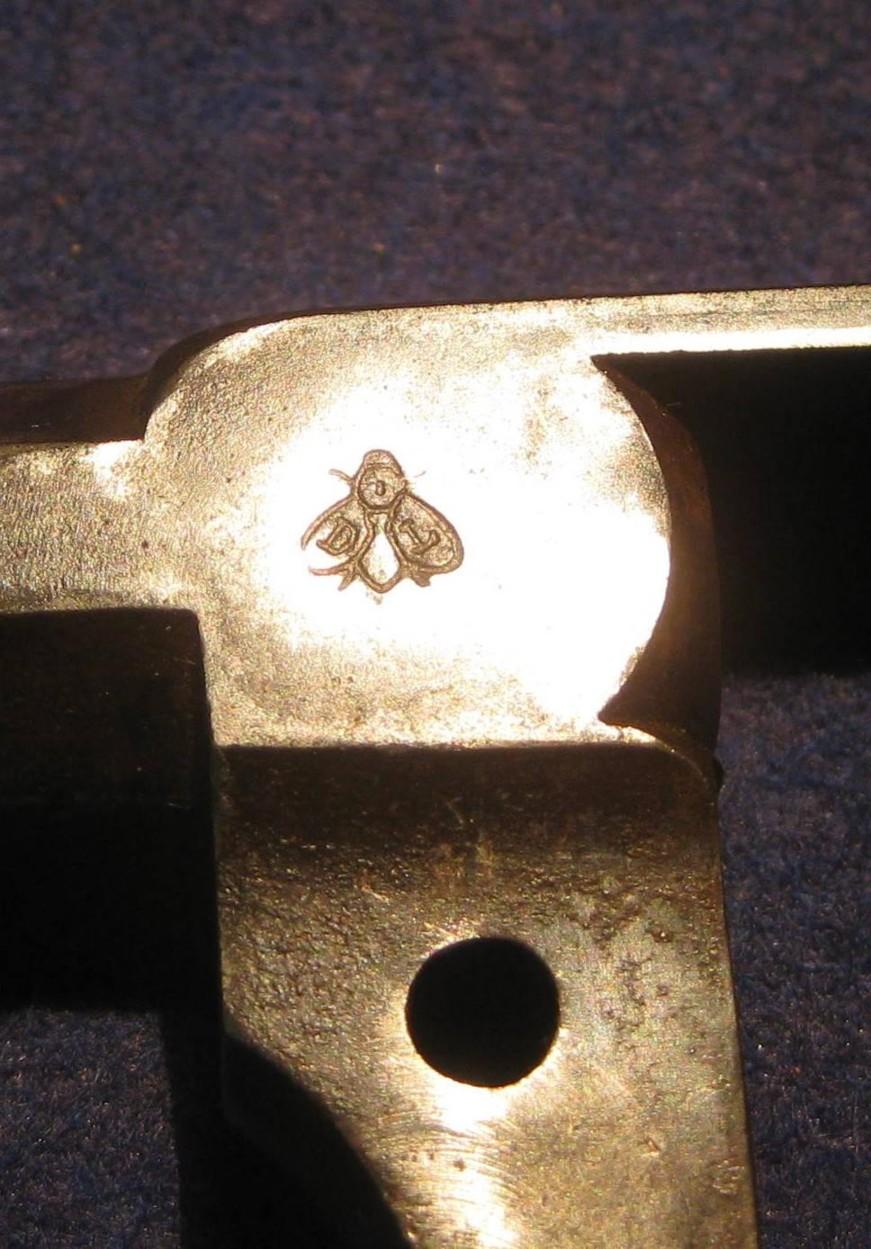
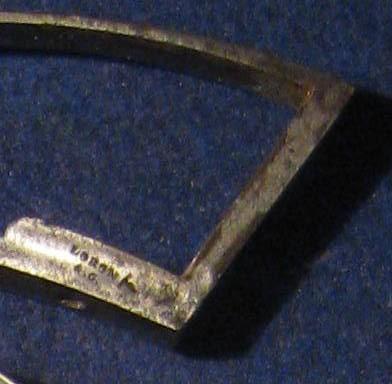
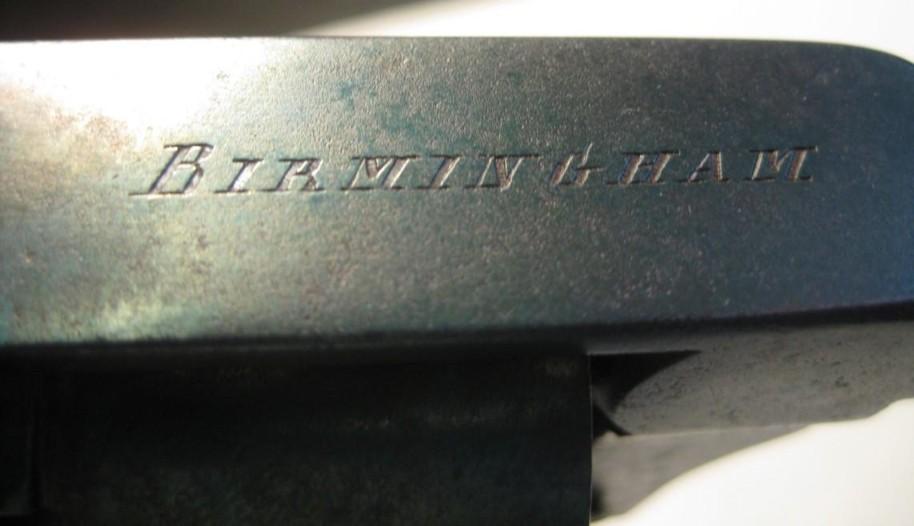
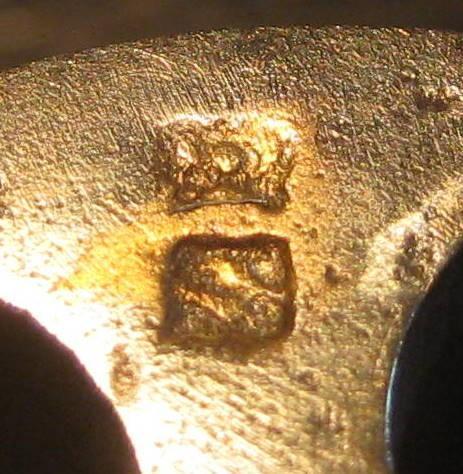
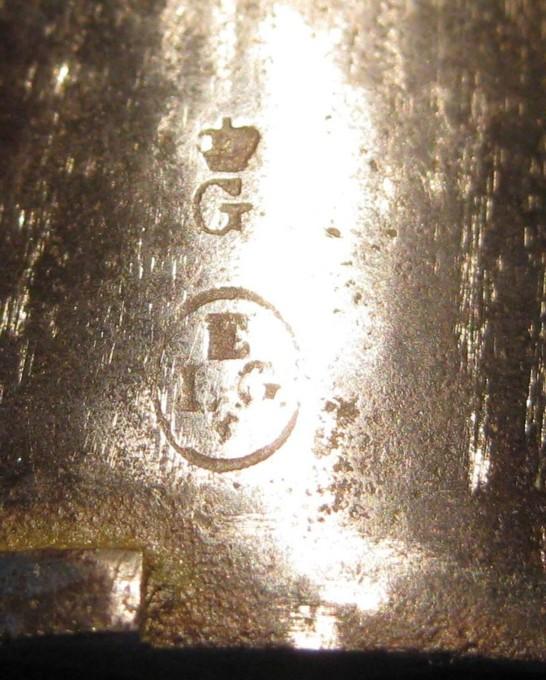
Ets Dresse Laloux et Cie
Rolling block

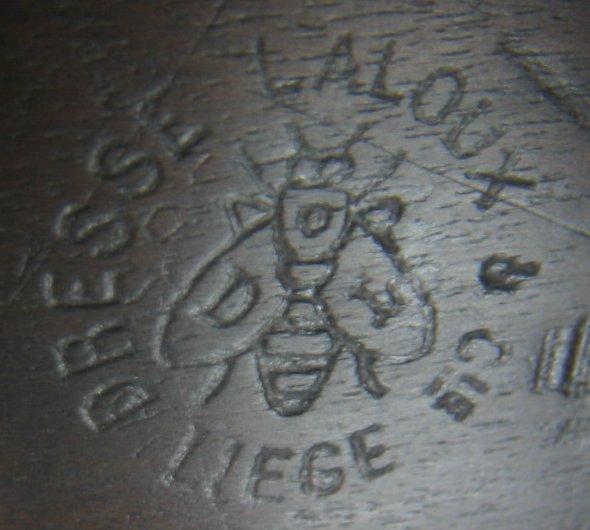
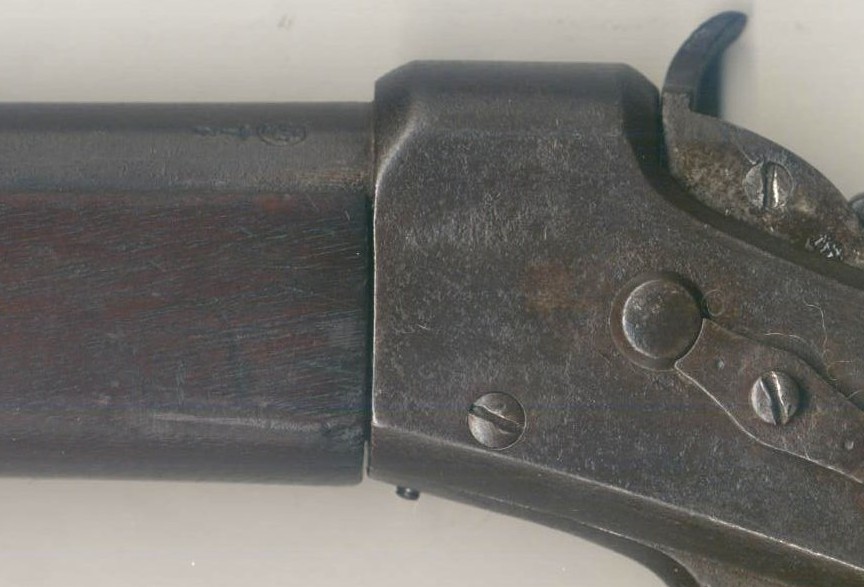

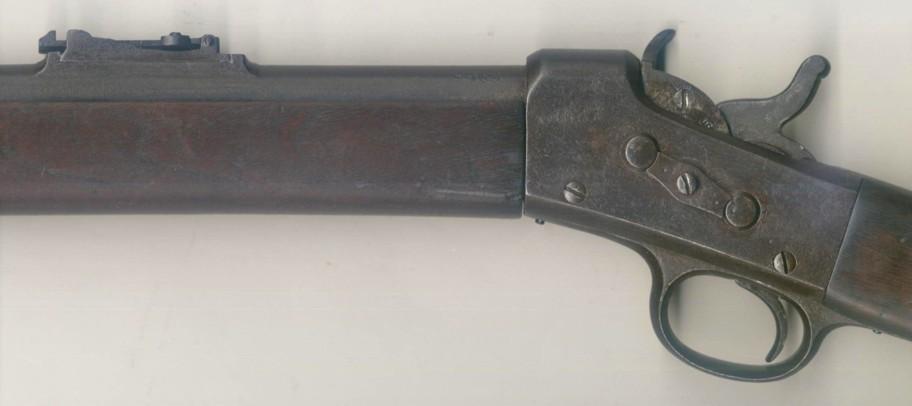
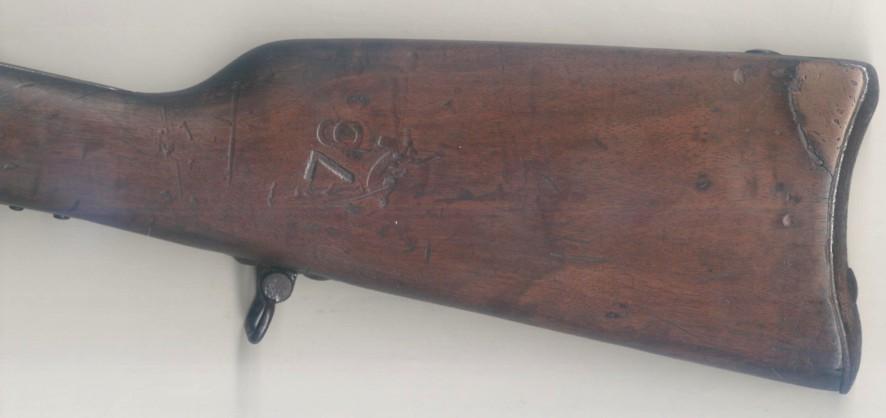

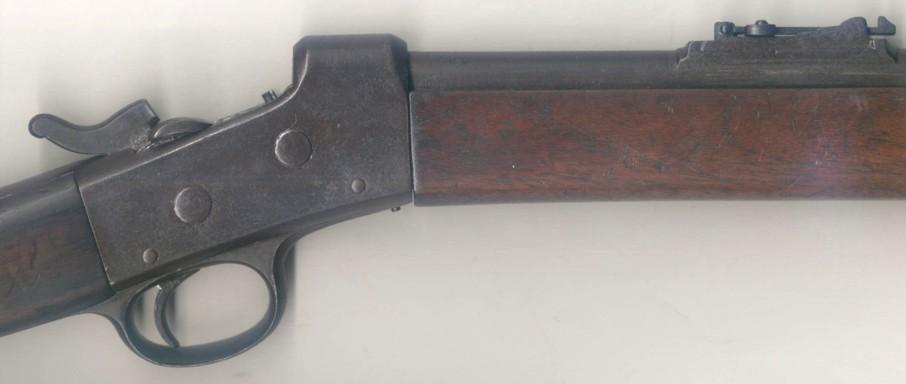
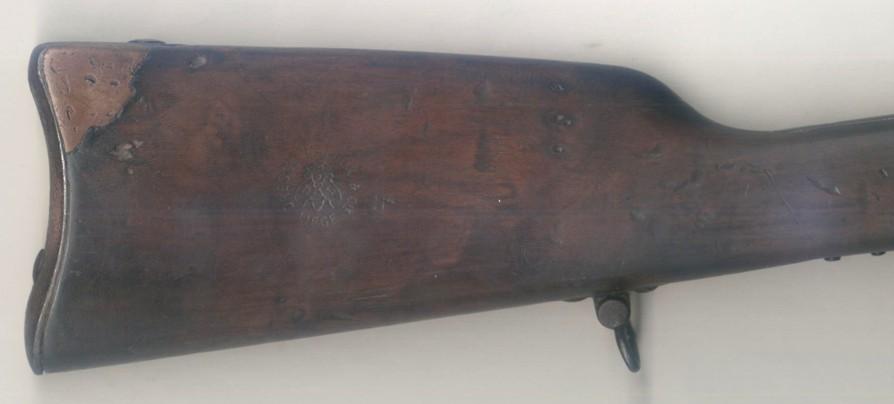
Ets Dresse Laloux et Cie
Taken again by George Laloux, Rue des Urbanistes, 3 in Liege
Model Smith & Wesson
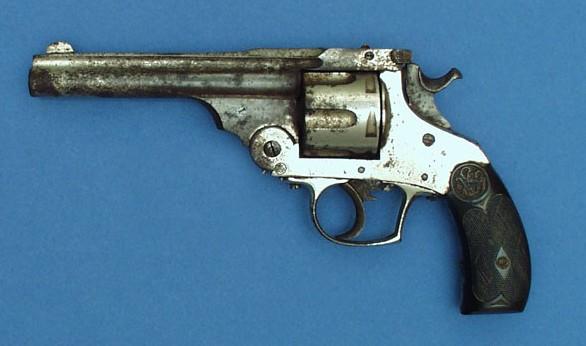
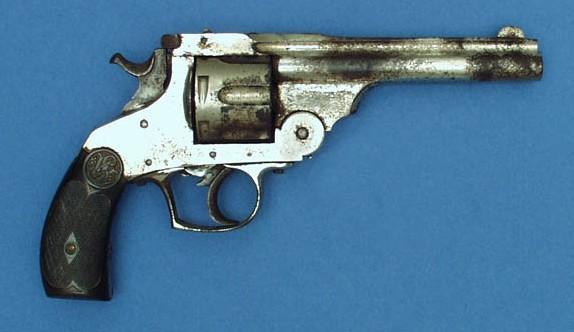
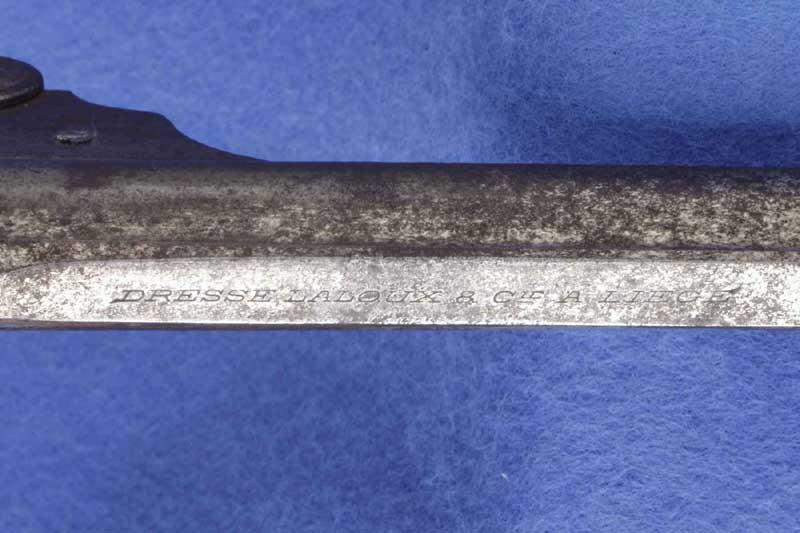
DRESSE-LALOUX
This weapon is a shotgun to unrifled bores, juxtaposed, with external hammers and opening seem to me does (photo rather dark) by key snake?
The stick of drowning is of gun type.
The punches
It carries the specific punches of the proof house ofLiege, that is to say:
Spangled ELG in an oval: final acceptance -1846/1893
Peron: inspection - 1853/our days.
EL in cursive letters: provisional test - 1852/our days.
R and X spangled: countermarks of the controllers - 1877 /1968
Marks DRESSE LALOUX A LIEGE: without comment.
crowned DL: it acts of the mark of the factory DRESSE LALOUX street On the Fountain, 47 in Liege and registered with the proof house of Liège of 1867 to 1908.
Conclusion
According to the punches, this weapon was manufactured between 1877 and 1893.
GG

